Samsung S90D or otherwise S94D has pleasantly surprised us in many ways. It offers excellent picture quality as befits a TV with an organic matrix. Depending on the size, the television can have different types of OLED panels. In the model we tested, the 65' version with a QD-OLED panel, the blacks are deep, and the colours are vivid and intense. The brightness of the screen, thanks to quantum dot technology, makes HDR effects very impressive. Watching dynamic scenes full of details is completely immersive. This is an ideal choice for those who want to enjoy cinema at the highest level at home. However, we noticed that the factory colour settings might require adjustment. But after the appropriate calibration, the TV showcases its full potential and competes with the best televisions, even above its price range. This model stands out with excellent viewing angles - better than the WOLED panel variants. The picture is clear and colourful from any position in the room. The Tizen operating system makes everyday use of the TV easy. Navigating apps and streaming services is simple and intuitive. Additionally, support for AirPlay and access to the SmartThings ecosystem enhance the multimedia capabilities of the device. When it comes to motion smoothness, the 144Hz panel handles fast scenes excellently and additionally eliminates motion blur. Watching sports or dynamic movies is a pleasure. For gamers, it offers support for HDMI 2.1 and low input lag, making it a great choice for console gaming. Despite numerous advantages, we noticed a few drawbacks. In bright rooms, the blacks on the QD-OLED panel lose their depth. This can be noticeable when watching during the day. Another somewhat less significant issue could be the readability of fonts when using a PC. It could be better; some texts are less sharp compared to other models. Nevertheless, the 65' Samsung S90D or S94D is a television that combines exceptional picture quality, motion smoothness, and innovation. It is one of the best options in the premium segment that will meet the expectations of both cinema lovers and gamers.
- Matching (Score)
- Our verdict
- TV appearance
- Where to buy
- Contrast and black detail
- HDR effect quality
- Factory color reproduction
- Color reproduction after calibration
- Smoothness of tonal transitions
- Image scaling and smoothness of tonal transitions
- Blur and motion smoothness
- Console compatibility and gaming features
- Input lag
- Compatibility with PC
- Viewing angles
- TV efficiency during daytime
- Details about the matrix
- TV features
- Apps
- Playing files from USB
- Sound
Samsung QD-OLED S90D / S94D vs Hisense U7Q PRO
Direct compare
S90DAT / S94DAT
U7Q PRO / U78Q PRO
Available screen sizes: 65”


Panel type: QD-OLED
Resolution: 3840x2160
System: Tizen
Model year: 2024
Complete the survey to find out the result

Panel type: LCD VA
Resolution: 3840x2160
System: VIDAA
Model year: 2025
Complete the survey to find out the result

Overall rating
8.2
7.4
Movies and series in UHD quality
8.5
7.2
Classic TV, YouTube
9.2
7.1
Sports broadcasts (TV and apps)
8.9
6.7
Gaming on console
9.6
8.3
TV as a computer monitor
8.6
8.2
Watching in bright light
5.3
6.2
Utility functions
7.4
9.4
Apps
8.7
7.7
Sound quality
7.4
7.8
Complete the survey to find out what fits your preferences
Advantages
Perfect black (OLED)
Great for 4K and HD content
Excellent for gamers - 144hz, HDMI 2.1, low input lag.
Among the best viewing angles on the market
High coverage of a wide color gamut
Above-average sound quality
Excellent contrast and black - true Mini-LED backlighting with VA panel (65")
Very good motion fluency - 4K@165 Hz panel
Very high HDR brightness - even above 1500 nits
Perfect for gaming - Low input lag, VRR, ALLM, 4x HDMI 2.1, 288Hz at 1080p.
Vidaa operating system has many features like Airplay, USB recording
Outstanding quality of tonal transitions
Disadvantages
No support for DTS soundtracks (may be an issue with external players)
Black levels issues during the day
No support for HGiG
Average viewing angles
Missing apps on the VIDAA platform
Our verdict
The U7Q PRO is a TV that makes it clear within minutes: "speed is what matters here". Hisense has surprised us with how much they’ve packed into a device that doesn’t cost a fortune. A refresh rate of 165 Hz in 4K, and even 288 Hz in Full HD – not long ago, such figures were reserved exclusively for top-end gaming monitors. And here we have a mid-range TV with almost a full suite of features for gamers, confidently throwing down the gauntlet to much pricier competitors. But it doesn’t stop at speed. The U7Q PRO also boasts a very bright screen, peaking at an impressive 1500 nits. Like every Mini-LED, it has its typical "moods", occasionally exaggerating the image, but the overall visual effect remains very positive – especially in HDR content. It’s also worth mentioning the Vidaa operating system – fast, intuitive and equipped with features like AirPlay, a voice assistant, and a web browser. While it doesn’t offer the full range of apps found on Android, in everyday use the system performs exceptionally well. So, why is it “almost” perfect for gamers? It just lacks the HGiG feature, which allows for precise adjustment of brightness levels in HDR games. It’s a minor drawback, but it can be significant for console purists. Nevertheless, the U7Q PRO remains a very solid proposition – and a testament to the fact that Chinese manufacturers have not only caught up with competitors from Korea and Japan, but in some aspects have even begun to overtake them.
TV appearance





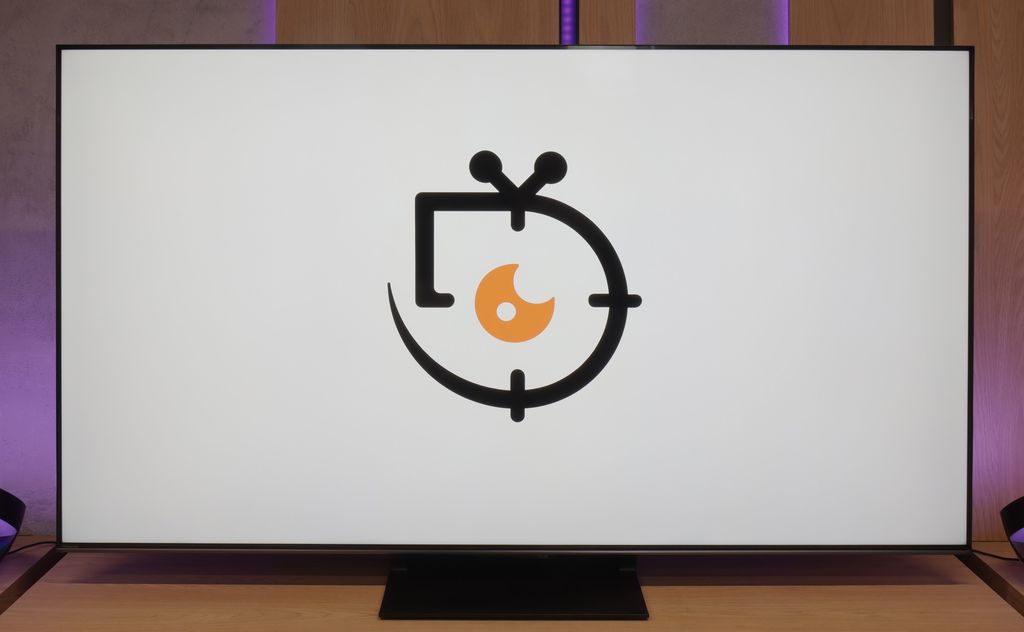
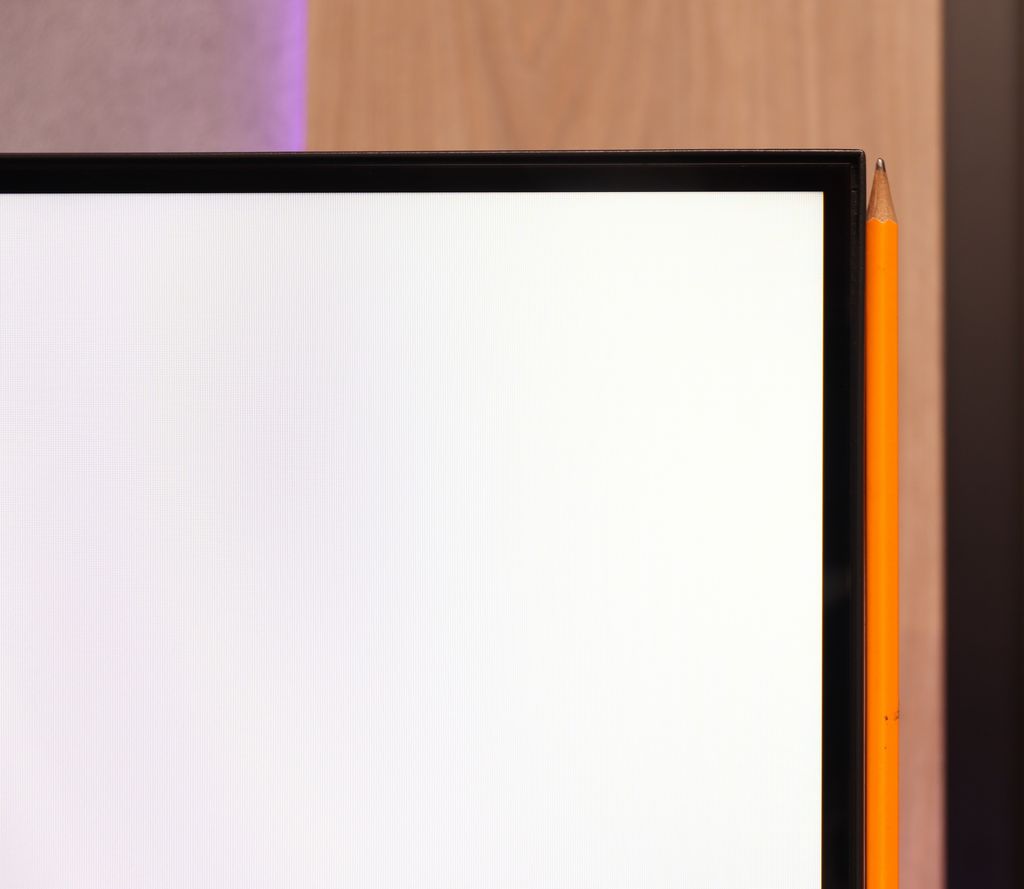
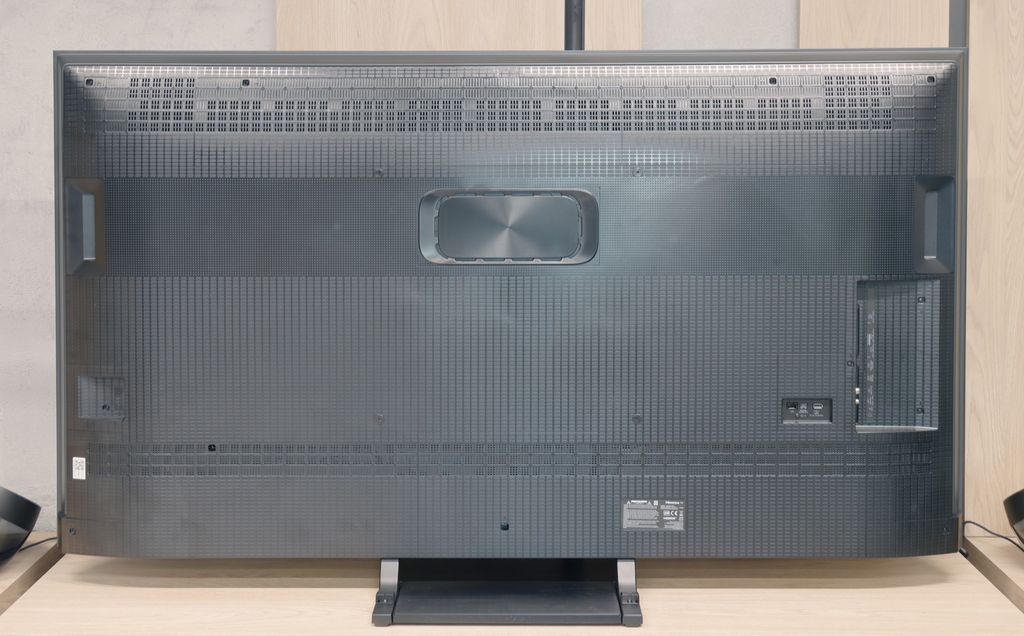

Contrast and black detail
10/10
8/10
Local dimming function: Yes, number of zones: 560 (20 x 28)
Contrast:

Result
∞:1

Result
∞:1

Result
∞:1

Result
∞:1

Result
∞:1

Result
340,000:1

Result
62,850:1

Result
42,000:1

Result
11,100:1

Result
7,500:1
Halo effect and black detail visibility:

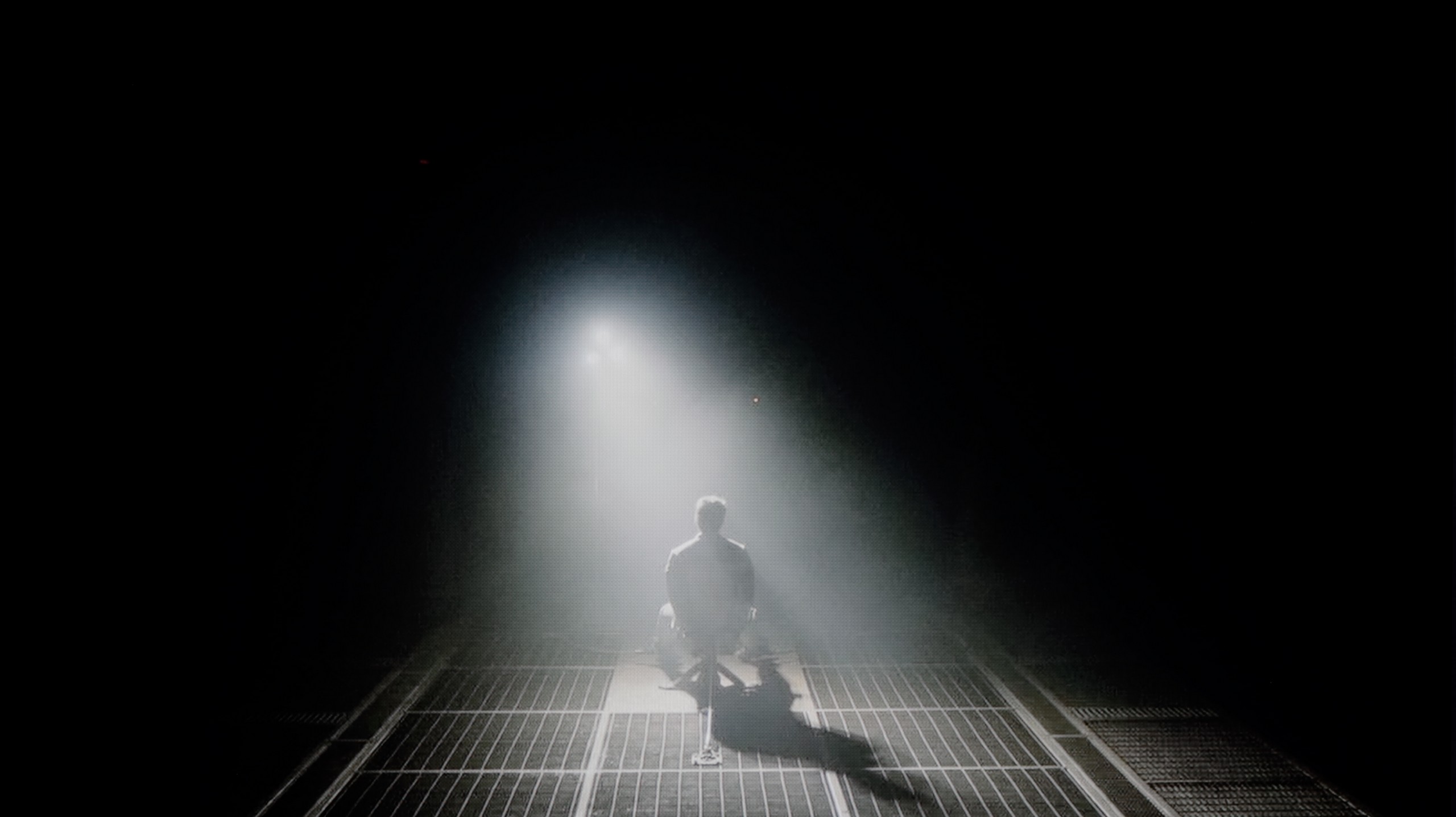
Samsung S90D, thanks to the use of a QD-OLED panel, offers excellent contrast, which is one of its greatest advantages. In QD-OLED technology, each pixel emits its own light, allowing for perfect blacks and precise detail reproduction in dark scenes. Unlike traditional LCD panels with backlighting, where blacks often appear greyish, turned-off pixels in QD-OLED remain completely black. As a result, the television provides a dynamic, realistic image with exceptionally deep contrast. For example, in scenes from "Oblivion," the Samsung S90D brilliantly captures the intensity of the lantern lights, highlighting details in the bright areas of the image, and in "The Revenant," it perfectly showcases the character against the backdrop of a deep, black forest scene, emphasizing impressive contrast reproduction. It is worth noting that in the Samsung S90D model, only this specific size is equipped with the QD-OLED panel produced by Samsung Display, setting it apart from other versions. Nevertheless, regardless of the panel used, the blacks on this television will always be perfectly black thanks to OLED technology, which turns off pixels for absolute blackness. This means that in categories such as black levels and contrast, the S90D delivers excellent picture quality regardless of the type of panel.
Hisense U7Q PRO is a mini-LED television with a VA panel and – in the version we tested, 65 inches – 560 local dimming zones. It's worth noting straight away that this number varies depending on the size – larger diagonals get more zones, while smaller ones get fewer accordingly. But regardless, the dimming system itself works really solidly here.
The contrast is genuinely very good for the price range in which this model is placed. In optimal conditions, the U7Q PRO can achieve results close to six-figure values, which until recently was reserved for much higher-end equipment. In practice – in scenes like the one from the film Oblivion – the picture looks stunning. With the lights on in the room, it's hard at first glance to distinguish this TV from organic screens. Of course, it’s still an LCD with local dimming, so compromises are unavoidable. In more challenging scenes, where there are many small light sources, the U7Q PRO tends to dim too aggressively. Instead of a slight degradation of black – some details that should be visible disappear. This is a side effect of the algorithm, which firmly adheres to the principle of “black should be black,” even at the expense of subtle elements in the picture.
But nonetheless – contrast is one of the stronger points of this model.
HDR effect quality
6.6/10
6/10
Luminance measurements in HDR:

Result
833 nit

Result
904 nit

Result
913 nit

Result
927 nit

Result
478 nit

Result
1129 nit

Result
323 nit

Result
721 nit

Result
267 nit

Result
736 nit
Scene from the movie “Pan” (about 2800 nits)

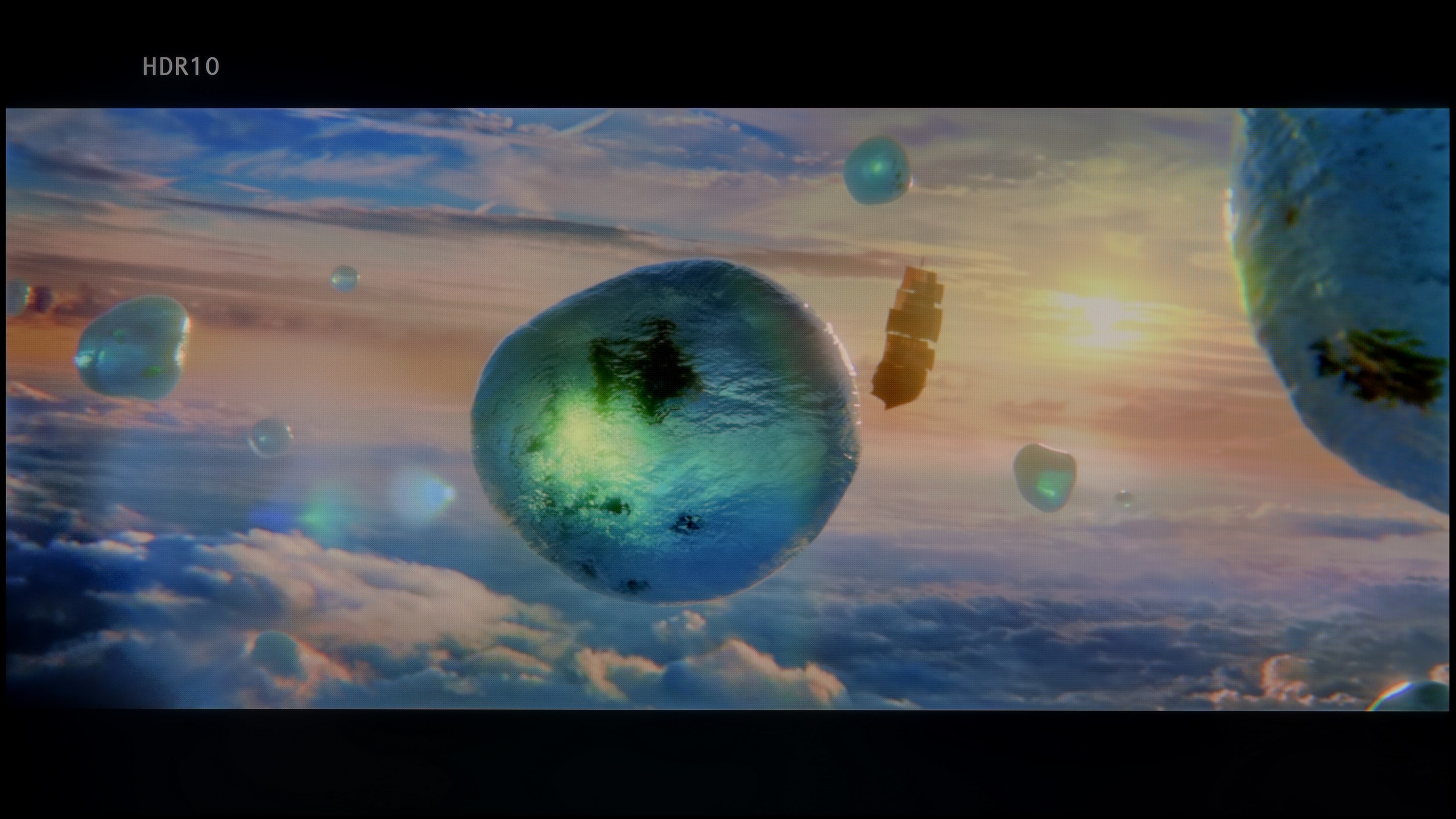
Scene from the movie “Billy Lynn” (about 1100 nits)


Static HDR10


Dynamic: HDR10+
Dynamic: Dolby Vision


HDR luminance chart:
Hisense U7Q PRO
Luminancja HDR
Luminance of RGB colors
Samsung QD-OLED S90D / S94D
Luminancja HDR
Luminance of RGB colors
In the HDR effect quality category, Samsung S90D achieves remarkable results. On the luminance chart up to 10% window, the TV exceeds the magical threshold of 1000 nits, which is an impressive outcome. However, in the film scenes we tested, these values were slightly lower. Additionally, in the case of a scene with fullscreen sunlight glare, brightness drops to around 500 nits, but it still remains at a very good level. It is worth mentioning that this model stands out with very high colour gamut coverage, thanks to the QD-OLED panel used, which gives it an advantage over TVs with WOLED panels that cannot achieve such a wide spectrum of colours.
U7Q PRO is truly a bright television. In synthetic tests, it achieved over 1500 nits, which is an outstanding result for this price bracket. Such brightness – at least in theory – allows it to display HDR content as intended by the creators, even in more demanding scenes with strong lighting. In practice, it performs very well, but not always perfectly. In bright scenes with large areas – like the test screen with intense sunlight from the film "Pan" – the U7Q PRO makes a huge impression. It can even dazzle with its light, which is definitely an advantage in the context of HDR content. Unfortunately, it doesn’t always manage to maintain this when there are many small bright details on a dark background. In such moments, the local dimming algorithms tend to dim some bright elements to maintain good blacks – and the side effect is that some details simply vanish from the frame. This is a classic compromise in mini-LED televisions – and the U7Q PRO is no exception. With such a large number of dimming zones, however, one could have hoped for a slightly more mature algorithm responsible for their control. Fortunately, the overall perception of HDR content is very positive. The U7Q PRO is not only bright but also colourful, thanks to the PFS LED (QLED) coating, the coverage of the DCI-P3 colour palette is at 95%, and BT.2020 around 73%.
Factory color reproduction
7.1/10
6.2/10


Factory Mode
After calibration


Factory Mode
After calibration
Samsung 65 S90D with a QD-OLED panel has been tested in Filmmaker mode, which the manufacturer has been using for years to provide the best possible picture settings. In this mode, the TV offers a fairly decent image but with some shortcomings worth noting. In terms of white balance in HD content, viewers may notice a dominance of the red color. This effect can lead to the impression that certain skin tones appear unnatural and the overall scene will be too warm, which in turn can affect immersion in the watched material. In scenes where subtle differences in color are crucial, these distortions can be particularly noticeable. Similar sensations may also occur in 4K HDR content. Changes in white balance in this case can be analogous, with a noticeably smaller deviation in red color. This can also cause certain details and colors to not be fully represented, making the image lose its naturalness.
When it comes to contrast, the gamma presents quite well, however, some errors are still noticeable. Gamma values are below the reference level of 2.4, which can result in bright areas of the image being washed out and dark areas lacking detail. This limitation can cause some scenes to lack depth and detail, which in turn affects the overall presentation quality. On the other hand, the EOTF curve related to contrast in 4K HDR content performs really well, showing that the TV can effectively convey differences in brightness. Nevertheless, it is worth noting that these values are slightly below the ideal level on the graph, indicating the need for further optimization in this regard.
Samsung S90D in Filmmaker mode offers solid color reproduction, but requires some adjustments to fully realise the potential of the TV, especially in the context of different types of content.
We tested the U7Q PRO in the best possible picture mode that this model offers – Filmmaker Mode. And indeed, this mode performs the best in terms of colour reproduction. But that doesn’t mean it’s perfect. In our test unit, both in SDR and HDR content, the image had a slightly cooler tone. The white balance was shifted towards blue, which made the overall image feel a bit "cooler." It may not be glaring, but it is definitely noticeable – particularly on white backgrounds, which instead of being neutral, seemed slightly bluish. Additionally – as we mentioned earlier – the television has a tendency to slightly brighten and oversaturate the image, which is also confirmed by the gamma and EOTF charts. All of this together means that without calibration, the image may appear somewhat unnatural – too cool, with slightly exaggerated dynamics. That’s why we decided to perform our own calibration – and you can see its effects and charts below.
Color reproduction after calibration
8.9/10
7.5/10

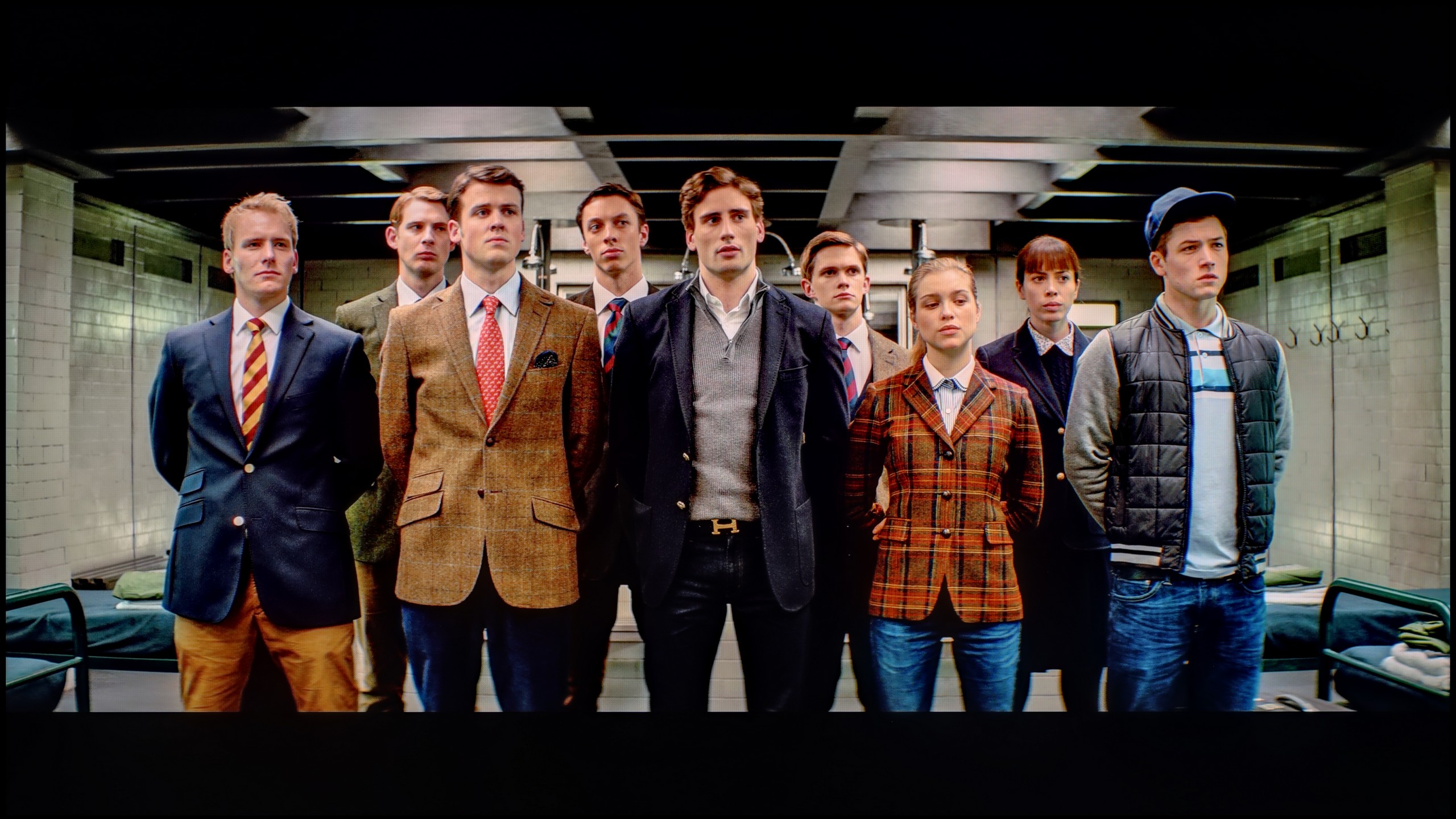

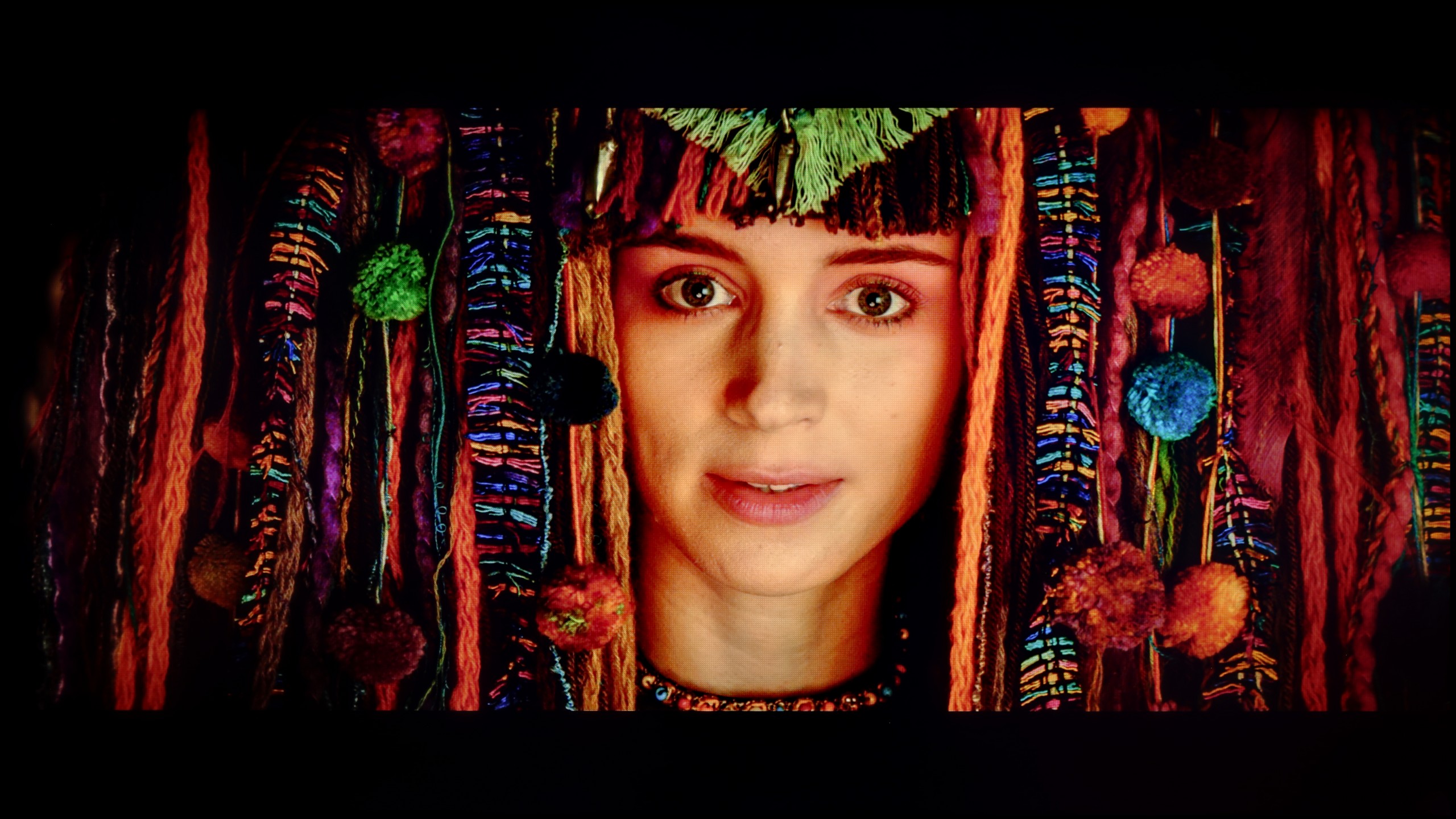
After calibrating the TV, the Samsung S90D in film mode gains quality more than one might expect. The white balance for HD and 4K HDR content has been adjusted to near perfection. Although minor shortcomings can be noticed, they are subtle enough that they don’t significantly impact the overall picture quality. The colours have become more harmonised, aiding in the natural reproduction of details, particularly in scenes that require precise colour representation. It is worth noting that this model, in this size, uses a QD-OLED panel which offers broader colour gamut coverage compared to other sizes of this model that are equipped with a WOLED panel.
The contrast has also significantly improved. After calibration, the gamma graph is much closer to the expected line, providing a better balance between light and dark tones in the picture. The EOTF curve, which before calibration indicated issues with overexposed scenes, now shows significantly better results. This effect allows for the retention of more details in the bright areas of the image, especially in HDR materials.
Thanks to calibration, we've managed to tame the white balance in SDR and HDR content. For SDR material, the effect is really quite good – the image becomes neutral, cohesive, and simply pleasant to watch. Everything looks the way it should.
HDR performs a bit worse. Although the white balance looks correct and overall the image gains naturalness, unfortunately, the delta E errors are still noticeable. Why? Because Hisense's U7Q PRO model does not give us full control over how the television manages brightness in HDR mode. And this is where the limitation arises. When we look at the EOTF curve for HDR content, it clearly shows what we mentioned earlier – at the beginning of the graph, there’s a noticeable drop, meaning the television darkens the smallest portions more than it should. On the other hand, those brightest elements can be overly bright. As a result, some details are lost, others are too aggressive, and overall control over brightness doesn't always align with what we’re trying to achieve during calibration.
Does the image look better after calibration? Definitely, yes, in terms of colour. But when it comes to brightness management in HDR, one must accept that the Hisense U7Q PRO will still do it in its own way.
Smoothness of tonal transitions
8.6/10
9.5/10







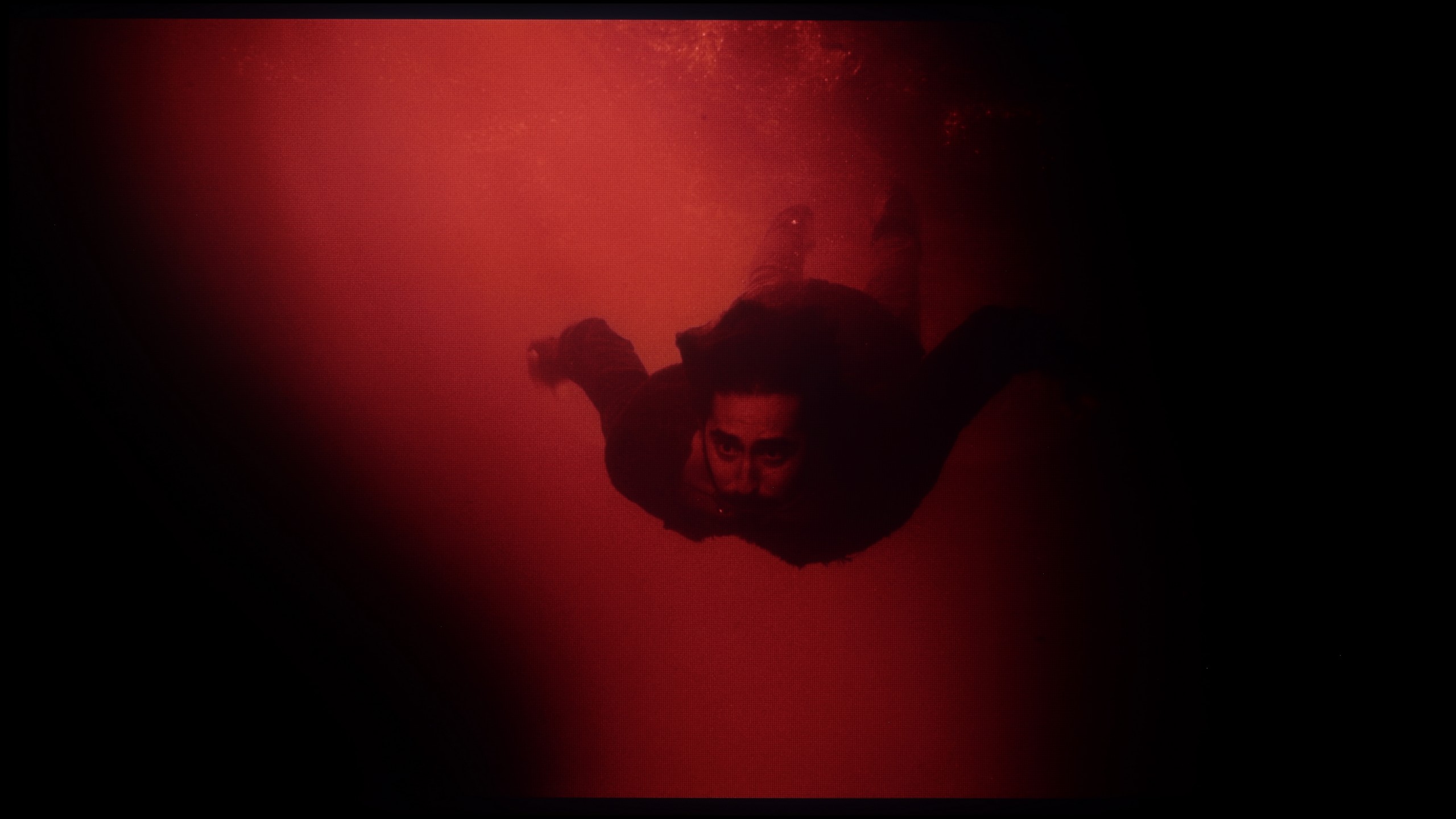




In the category of fluid tonal transitions, the television S90D exhibits significantly better results than its counterpart with a WOLED panel. Thanks to the use of a QD-OLED panel, this model provides more consistent and natural transitions between colours. Although some minor imperfections were noted during testing, they are subtle enough not to impact the overall visual experience. When watching various video content, tonal transitions are smooth and harmonious, allowing viewers to enjoy the depth and detail of the image without irritating distractions. In tested scenes where colour changes are particularly important, such as in landscapes or dynamic sequences, the television Samsung S90D performs excellently, rendering differences in shades with adequate precision.
The U7Q PRO handles tonal transitions really well. Colours blend smoothly, with no banding, stripes, or strange artefacts. Even in tougher scenes that typically expose any imperfections – there was nothing to criticise here. The picture simply looks clean. The gradients – both colour and grey – are fluid, nothing tears, nothing distracts. It's one of those elements you don't notice while watching… certainly not with the U7Q PRO.
Image scaling and smoothness of tonal transitions
8/10
7/10
Smooth transition function

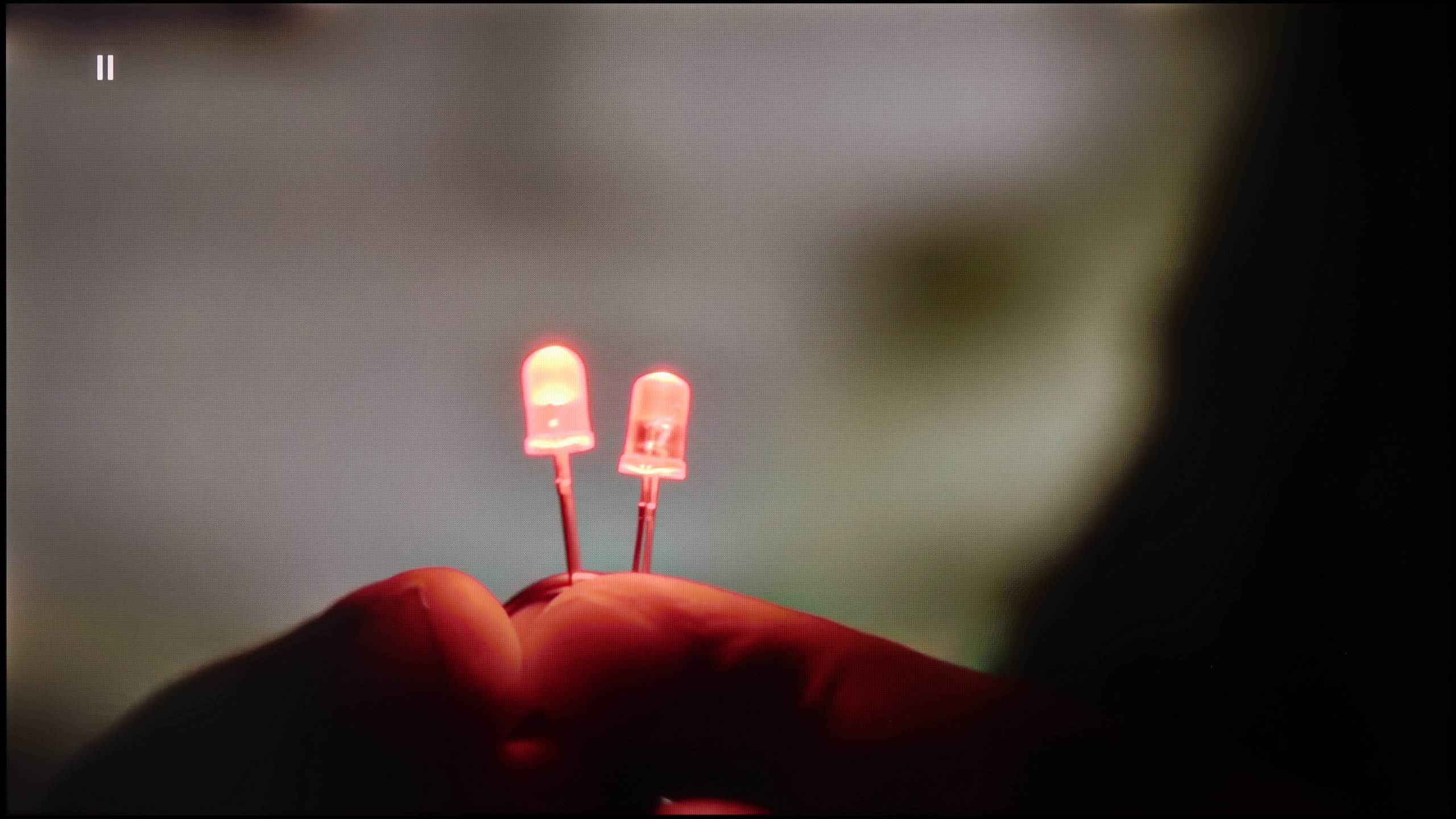
Image without overscan on the SD signal


The television handles tonal transitions excellently, allowing colours to flow smoothly into each other, creating a natural image. The built-in noise reduction feature can further enhance these transitions, which can be useful in certain situations. However, it is worth remembering that activating this option may lead to excessive smoothing of the desired film grain structure, which in turn can affect the authenticity and atmosphere of the image. Therefore, caution is recommended when using this feature to avoid losing the character and depth of the content.
The Samsung S90D model effectively processes materials in lower resolutions. This can be seen in the displayed image. The model's silhouette is clear and naturally reproduced, with details well preserved. Additionally, the branches of the trees are well-defined, showing no visible jagged edges that could degrade the quality of the image. Thanks to effective upscaling, even lower resolution materials look attractive on the screen, which will surely please users enjoying a variety of content sources, such as standard cable or antenna television.
If someone happens to come across older materials where the banding issue arises – Hisense has a solution for that. In the U7Q PRO, we find a feature called "Smooth and Gradient Picture". Set to the "Medium" level, it works really well – eliminating most gradient problems without smoothing the entire image like a blur in Photoshop. 😉 Film grain remains, details don't disappear – that's exactly how it should work. Well done on the implementation!
As for scaling weaker materials, it's simply good. It's not at the level of the most expensive TVs with advanced upscaling, but older content looks good. There is some minor banding at very low resolutions, but that's perfectly normal and hard to avoid. On the plus side – even with the oldest materials, there is no overscan effect, the image isn't cropped or artificially stretched.
Blur and motion smoothness
8.5/10
7.5/10

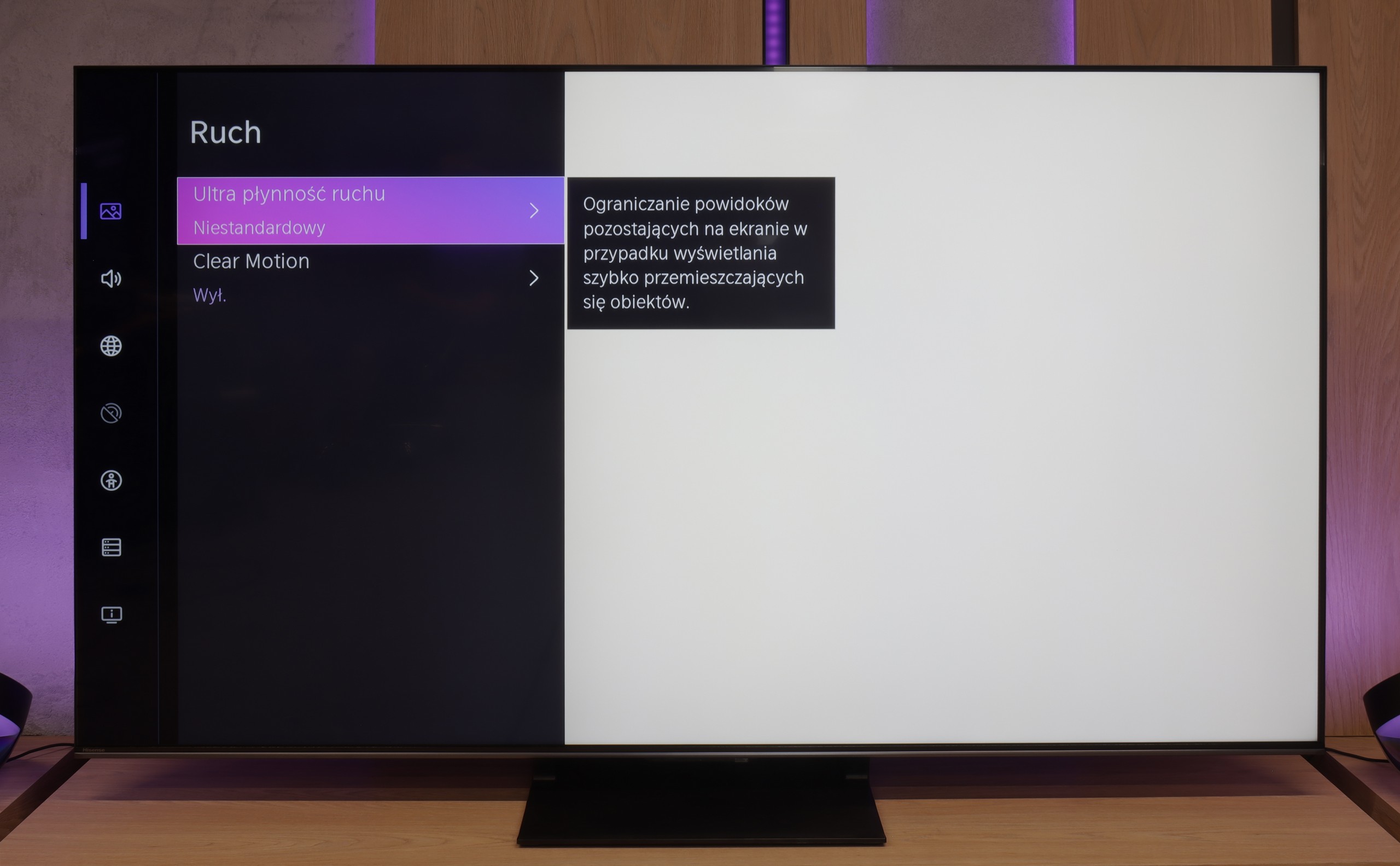
Blur (native resolution, maximum refresh rate):



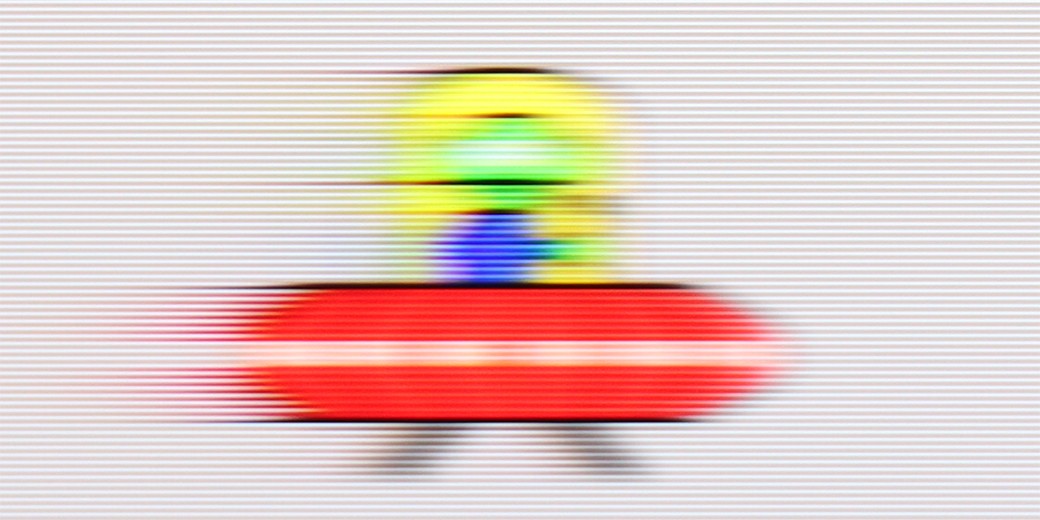
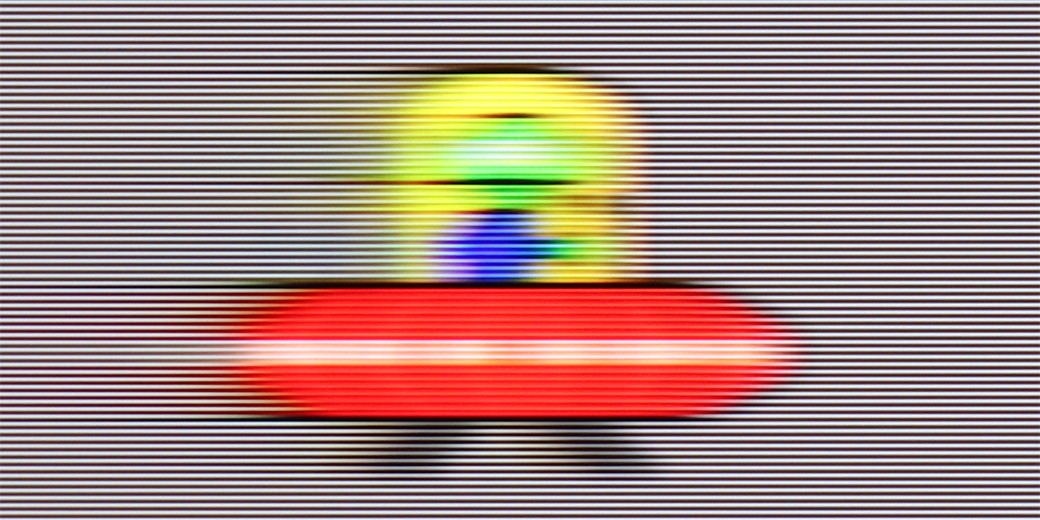
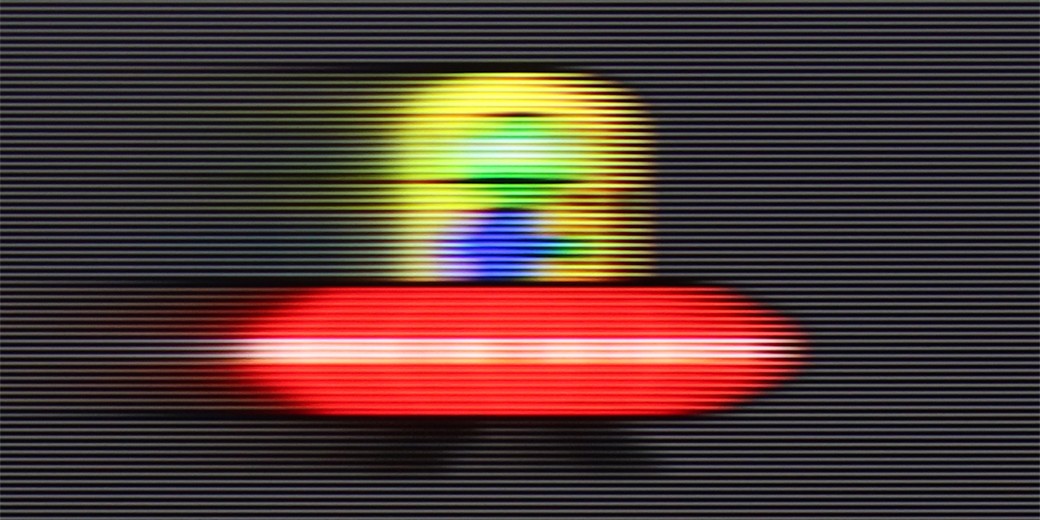
Blur (BFI function enabled):
Image flickers in this mode



Smużenie ():
Smużenie (1080p 288Hz):

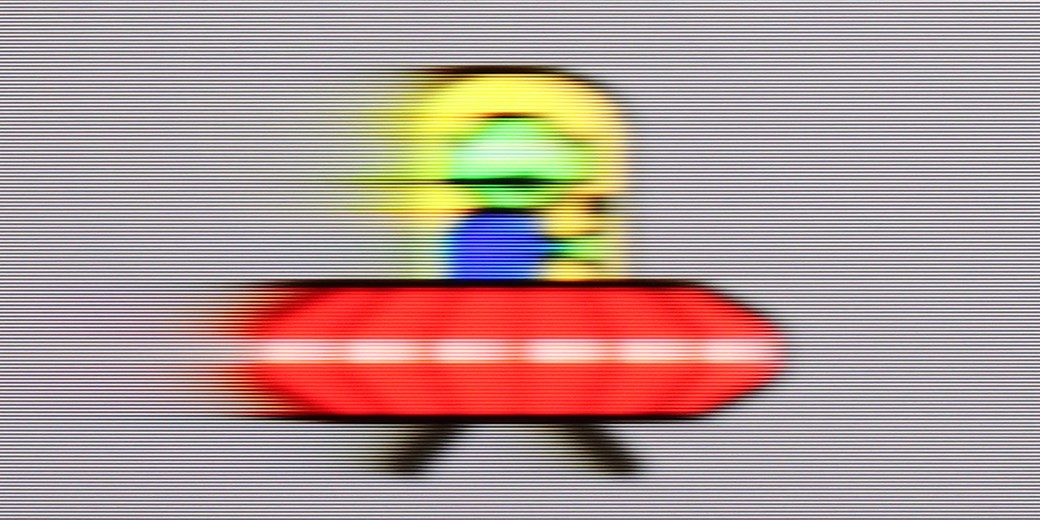
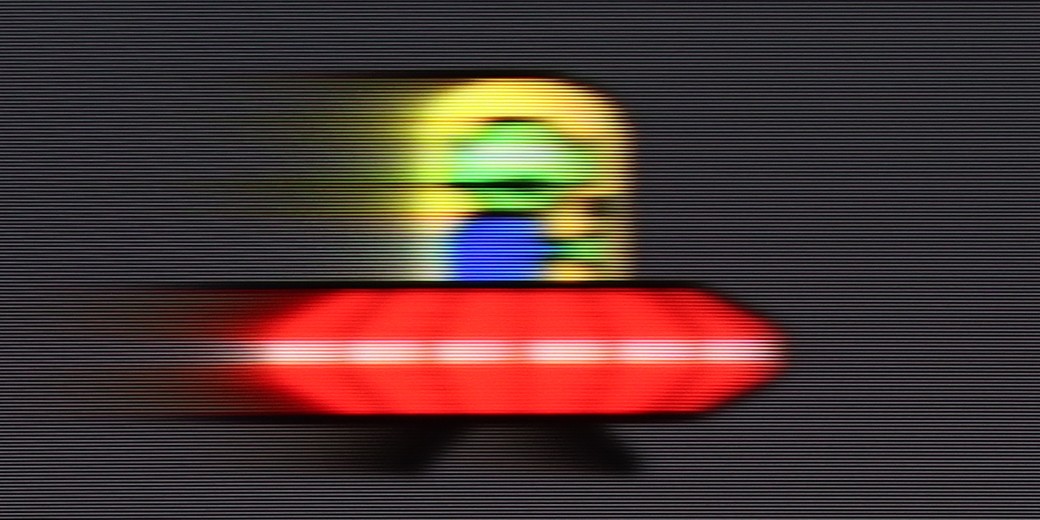
Samsung S90D TV, equipped with a refresh rate panel of 120 Hz, and in the appropriate PC configuration even 144 Hz, ensures excellent motion fluidity. Samsung focuses on a variety of image clarity settings on a ten-point scale, giving users the freedom to adjust the display to their own preferences. In UFO tests, the OLED panel shows its strengths, eliminating any blurring. The lightning-fast pixel response makes dynamic movements faithfully reproduced.
Similar results can be observed in other sizes of this model with a WOLED panel, which also offer excellent image fluidity. Organic technology, in this case, is considered one of the best on the market. The picture of Samsung S90D, regardless of the type of panel, is incredibly sharp and detailed, making this TV perfect for dynamic scenes, both during gaming and sports broadcasts. Additionally, its capabilities in terms of refresh rate and clarity ensure that every movement is smooth and natural, which will certainly satisfy even the most demanding users.
“Speed” – this word was most frequently mentioned during our tests of the U7Q PRO. The television is equipped with a 165 Hz panel, which in itself is impressive – especially considering we’re talking about a mid-range model. Of course, PC gamers will benefit the most from its full capabilities, but even during everyday viewing, it’s clear that this is a fast and efficient panel. Like most modern televisions, the U7Q PRO can also enhance the smoothness of films that were originally recorded at 24 frames. In the menu, we find a slider that allows us to adjust the effect to our own preferences – from a more cinematic feel, with subtle motion, to a stronger smoothing with the characteristic “soap opera effect.”
Console compatibility and gaming features
9.5/10
8.5/10
- ALLM
- VRR
- VRR range48 - 144Hz48 - 288Hz
- Dolby Vision Game Mode
- Correct implementation of HGIG
- 1080p@120Hz
- 1440p@120Hz
- 4K@120Hz
- Game bar

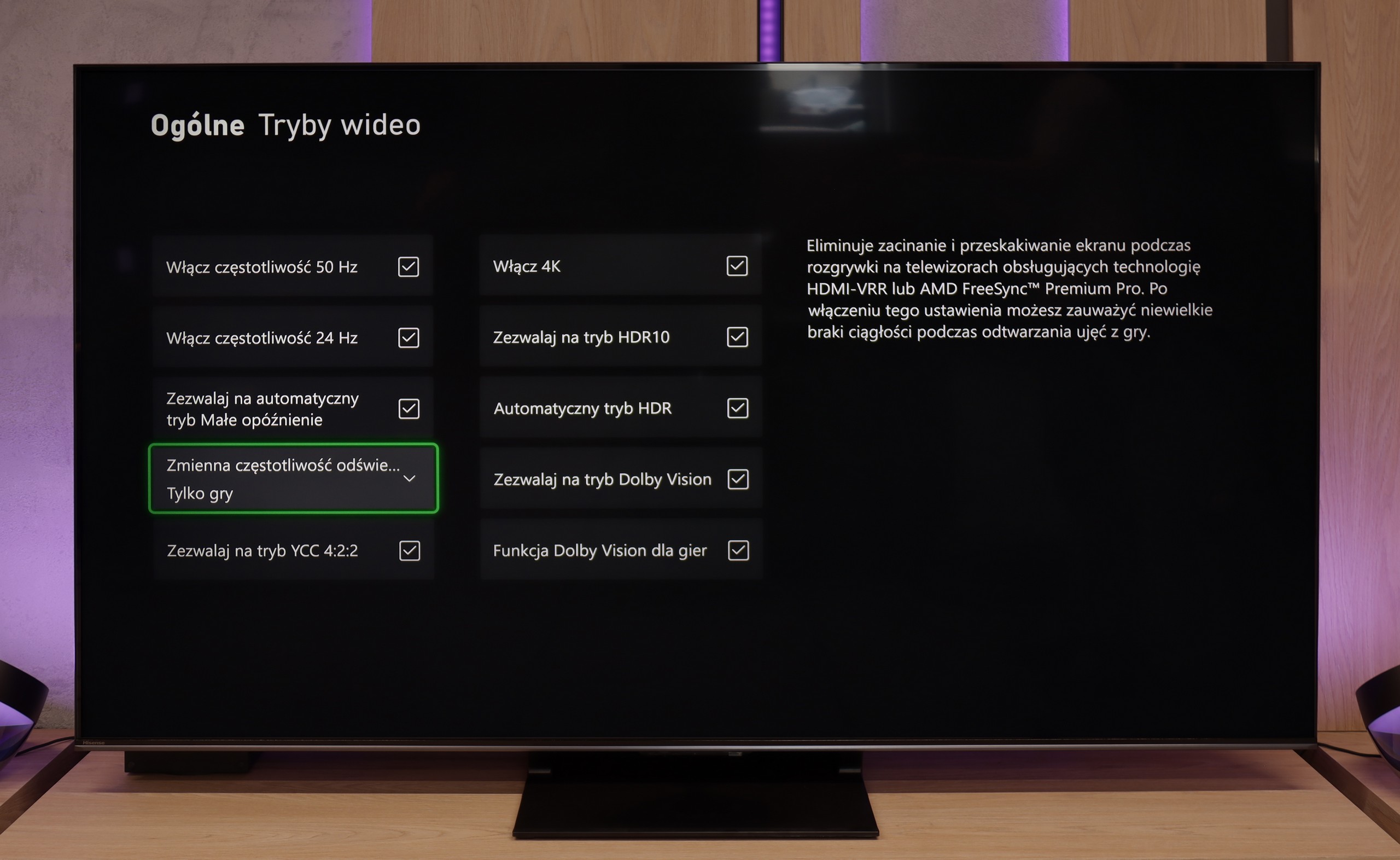



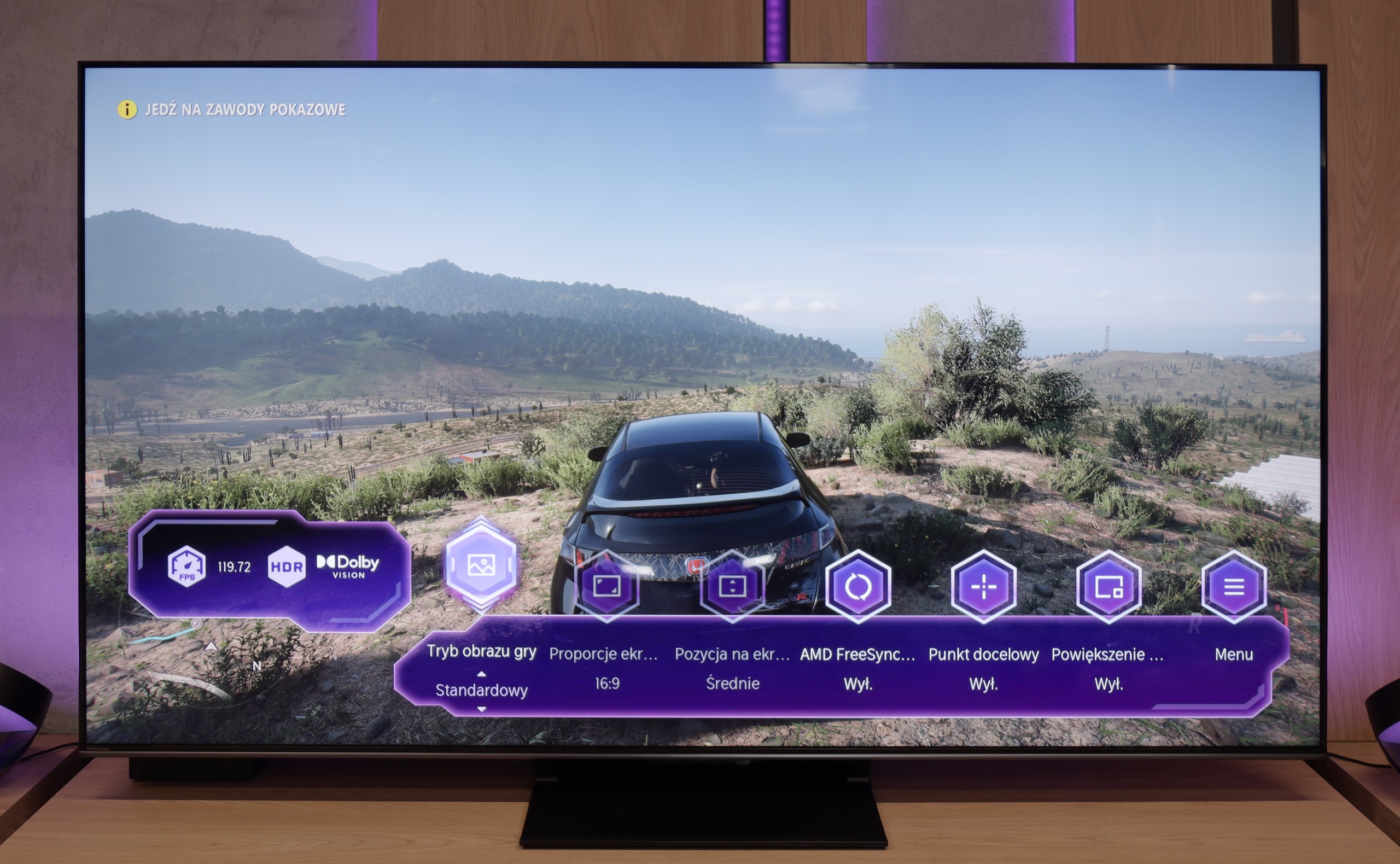

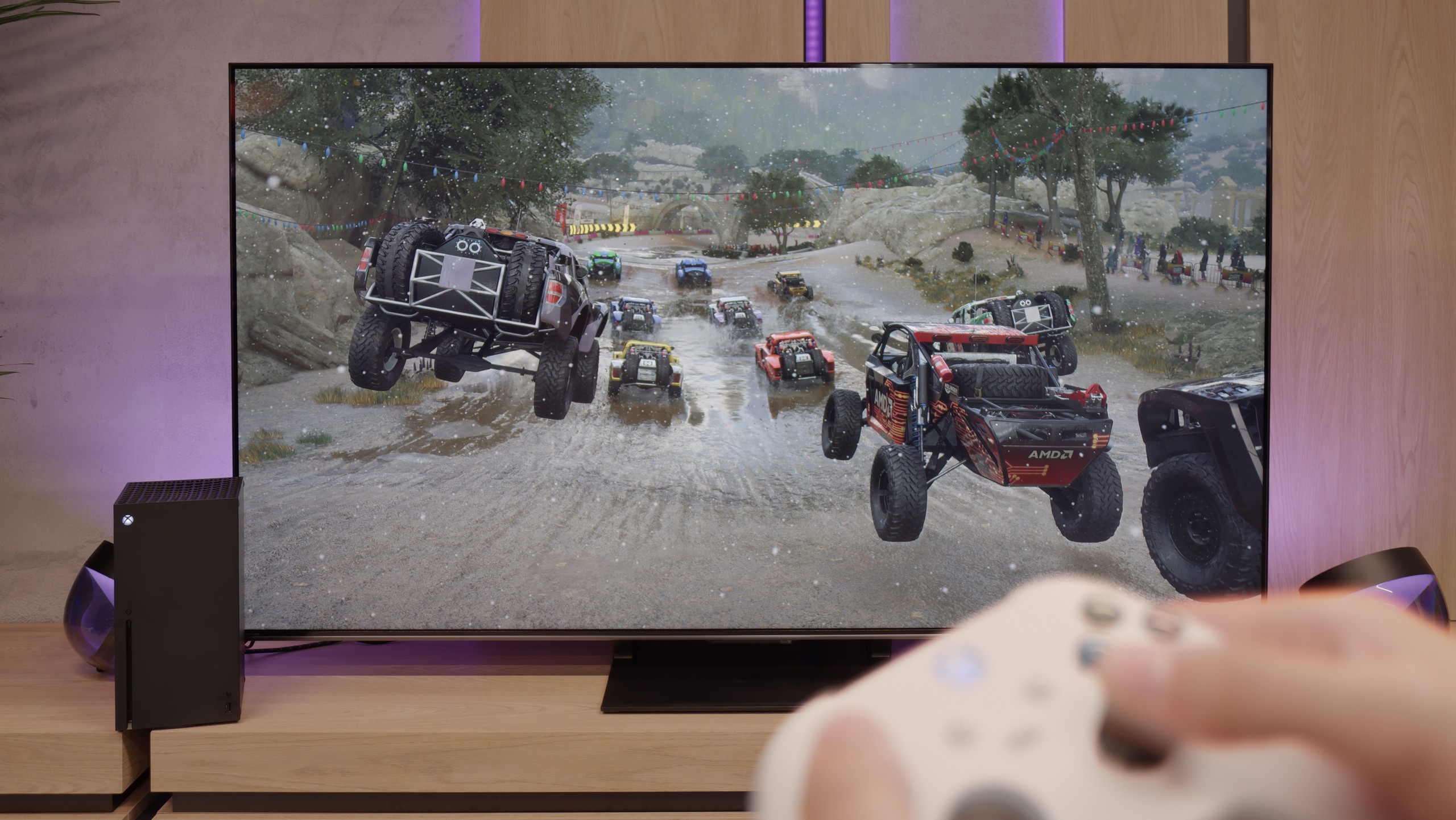
Television S90D is an excellent solution for gamers, offering a range of advanced features that elevate the gaming experience to a new level. Equipped with the HDMI 2.1 standard, the model supports modern technologies such as VRR (Variable Refresh Rate) and ALLM (Auto Low Latency Mode). Thanks to these solutions, the image is incredibly smooth, and the response to commands is instantaneous, which is crucial in dynamic titles. Additionally, the S90D supports HLG (Hybrid Log-Gamma) and G-Sync and FreeSync image synchronisation. This allows for a perfect connection with the Xbox, PlayStation, or PC, eliminating issues with tearing and stuttering. The built-in operating system offers the Xbox Game Pass app, providing access to a massive library of games directly from the television. This solution makes gaming even more convenient and accessible. The Game Bar feature provides quick access to important information, such as current settings, performance statistics, and the ability to adjust image options. This allows for on-the-fly modification of display parameters, which is incredibly useful during intense gameplay. Despite lacking support for Dolby Vision, Samsung S90D still delivers excellent HDR image quality, allowing for full utilisation of the potential of games and films. As a result, S90D represents a unique combination of modern technologies, excellent image quality, and intuitive features, perfect for any gaming enthusiast.
Hisense U7Q PRO is a TV that seems to have been designed with gamers in mind. We have practically everything that can be expected from a gaming screen: variable refresh rate (VRR), automatic mode (ALLM), and as many as four HDMI 2.1b ports with full bandwidth of 48 Gb/s. Additionally, there’s a clear and quite functional Game Bar, as well as a well-implemented Dolby Vision GAMING mode that works seamlessly with Xbox Series S and X consoles.
Sounds like the ideal? Well, almost. Unfortunately, Hisense has still not implemented the HGiG feature, which is the system's tone mapping limitation on the TV's end. This means that when configuring HDR brightness on the console, we do it “by eye” or look for settings in online guides, as the screen does not display its actual brightness range. It’s a shame – because HGiG makes it easier to match the console to the TV and helps avoid overexposed or too dark scenes in HDR games.
Fortunately, the other elements work very well. Input lag is low, responsiveness is excellent, and the handling of other features is faultless. And although not everything worked perfectly, the U7Q PRO can still be confidently recommended to gamers.
Input lag
10/10
9.8/10
SDR
HDR
Dolby Vision
QD-OLED from Samsung stands out with an incredibly low input lag, making it an excellent choice for gamers. Regardless of the resolution or refresh rate, both in SDR and HDR mode, results around 10 ms are truly impressive. Such a low input lag ensures immediate response to actions on the screen, which is crucial in dynamic games where every millisecond counts. Users can enjoy smoothness and precision, which makes the S90D TV with QD OLED panel a superb option for those who prioritise performance in gaming.
In terms of signal delay, the Hisense U7Q PRO performs exceptionally well. For 120 Hz content, the input lag stays below 10 ms, which translates to a lightning-fast response – the screen almost instantly reacts to our movements, something console and PC gamers will particularly appreciate. With 60 Hz content, the situation looks a bit worse, as the response time doubles – this is natural and applies to virtually all televisions. Nevertheless, it still remains below 20 ms, which can be confidently regarded as a very good result, almost close to perfection – and in practice, it’s hard to feel this during gaming.
Compatibility with PC
8.6/10
8.2/10

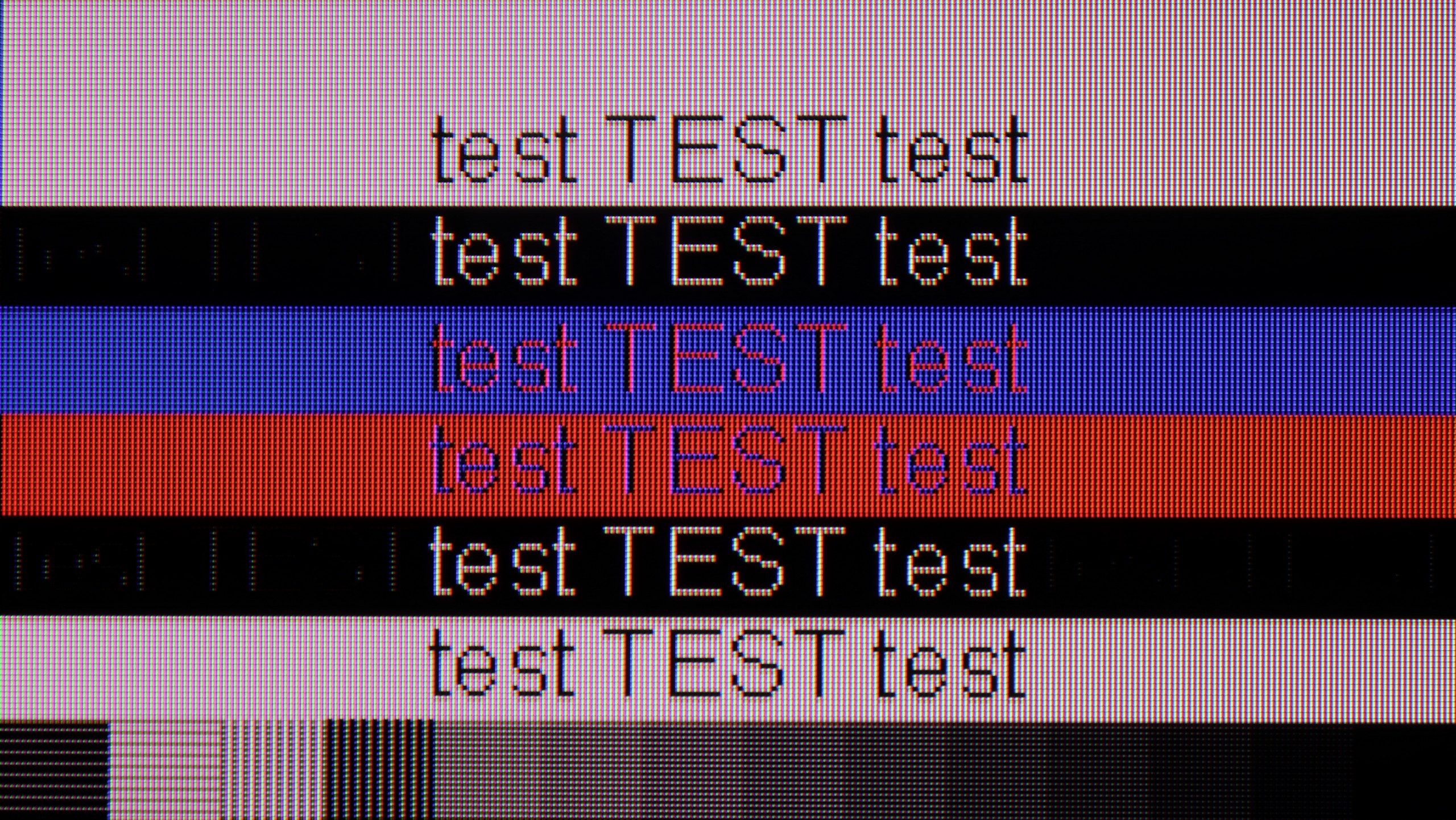
The Samsung S90D 65 TV performs excellently as a monitor for PCs. Fonts appear sharp, making it easier to read and use various applications. Support for chroma 4:4:4 at a resolution of 4K and a refresh rate of 144 Hz ensures full colour reproduction and outstanding image clarity. Moreover, the impressive input lag of just 5 ms is a significant advantage, especially for gamers and professionals working with graphics. However, it should be noted that points were deducted in this category compared to the WOLED panel version due to the different diamond arrangement of sub-pixels, which may lead to the distinct visibility of individual sub-pixels when displaying fonts on a dark background. This issue only pertains to the 65-inch version, so users who plan to use the TV on their desk will not encounter these difficulties with smaller variants.
Playing on a PC with the Hisense U7Q PRO is pure fun. Low input lag, a full 165 Hz in 4K and even 288 Hz in Full HD – these are numbers we wouldn't expect from a TV at this price. In this regard, it's really hard to nitpick. If someone is looking for a large screen for gaming from a PC – the U7Q PRO can confidently serve as a monitor. It performs a bit worse for everyday text work. Although chroma 4:4:4 is present, so theoretically, everything should look good. But in practice, grey text on a dark background looks strange – vertical lines are sharp, but horizontal ones can blur, disappear, or look slightly dimmed. However, it's fair to add that if you use the TV as usual – that is, from a few metres away – you're unlikely to notice this. The issue only becomes apparent when someone places the U7Q PRO on a desk, a metre from their face, and starts working with text or spreadsheets. If you plan to use it in this way – it’s worth keeping this in mind.
Viewing angles
9.8/10
3/10
In the category of viewing angles, the S90D Samsung stands out as one of the best models on the market. While traditional OLED TVs already offer solid performance, the use of a QD-OLED panel in the S90D elevates the picture quality to an even higher level. Thanks to the combination of Quantum Dot technology with self-emissive pixels, users can enjoy excellent color accuracy and detail, even when watching the TV from a wide angle.
In this regard, the U7Q PRO performs averagely. The television is equipped with a VA panel, which is not known for its wide viewing angles. When you start looking at the screen at an angle, the image clearly loses brightness and the colours start to fade. This is a completely normal phenomenon in VA panels without additional coatings to widen the angles – so if you plan to watch from the side or with a larger group, it's worth keeping this in mind. On the other hand, head-on – the image looks great, with deep blacks and very good contrast, much better than on IPS/ADS panels.
TV efficiency during daytime
5.3/10
6.2/10




Matrix brightness
Average luminance SDR
Hisense U7Q PRO: 472 cd/m2
Samsung QD-OLED S90D / S94D: 339 cd/m2
In the category of TV performance during the day, the model Samsung S90D 65 ranks the worst among the tested options. Although the glossy panel and good anti-reflective properties suggest some efficiency in bright conditions, the quality of blacks during sunny days proves to be the biggest issue. This phenomenon is caused by the close placement of quantum dots to the outer layer of the screen. Under the influence of external light rays, these dots can activate, resulting in the blacks on the screen becoming more cherry-like. This effect causes the image to lose depth and intensity, which can be particularly noticeable in darker scenes. As a result, users who plan to use the TV in bright rooms or under strong sunlight may encounter difficulties in achieving satisfactory image quality. However, when it comes to watching movies with a lot of black, this usually takes place in the evenings when the issue of intense sunlight is no longer as significant. In such conditions, the S90D performs significantly better, and users can enjoy a pleasant visual experience. During the day, while watching regular TV, the television also performs adequately, which means it is not a complete disqualifier for this model.
As we mentioned earlier – the U7Q PRO is a really bright TV, especially when it comes to HDR content. For SDR materials, the TV dims a bit, but an average brightness level of around 500 nits is still a very solid result. This means you can easily watch TV or movies even in quite a bright room. Only under very extreme lighting – like direct strong sunlight on the screen – can visibility suffer a bit. Fortunately, Hisense has applied a satin anti-reflective coating that effectively reduces reflections, and the blacks maintain their depth even during the day. This makes a difference and allows for comfortable use of the TV in various lighting conditions.
Details about the matrix
Subpixel Structure:

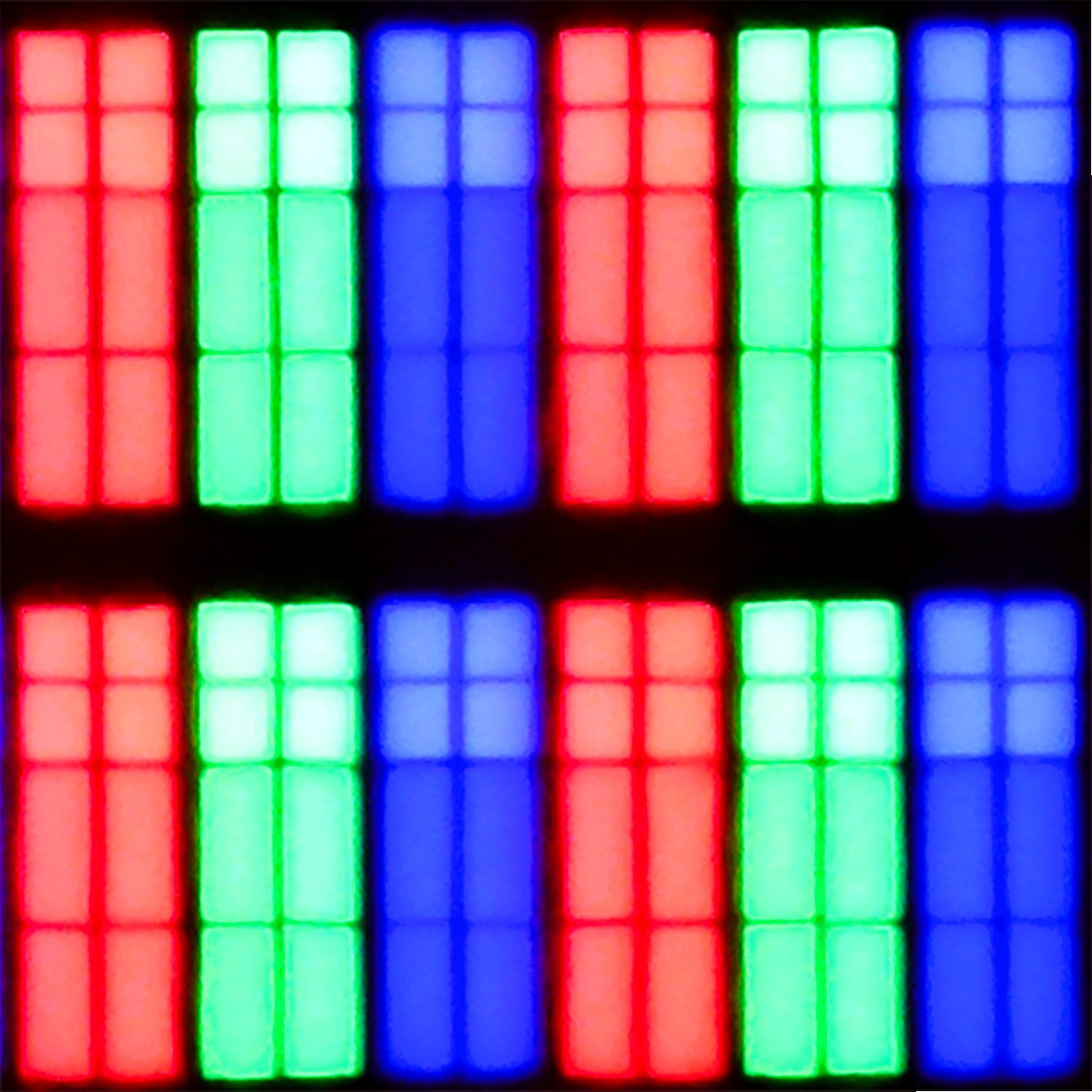
Panel uniformity:

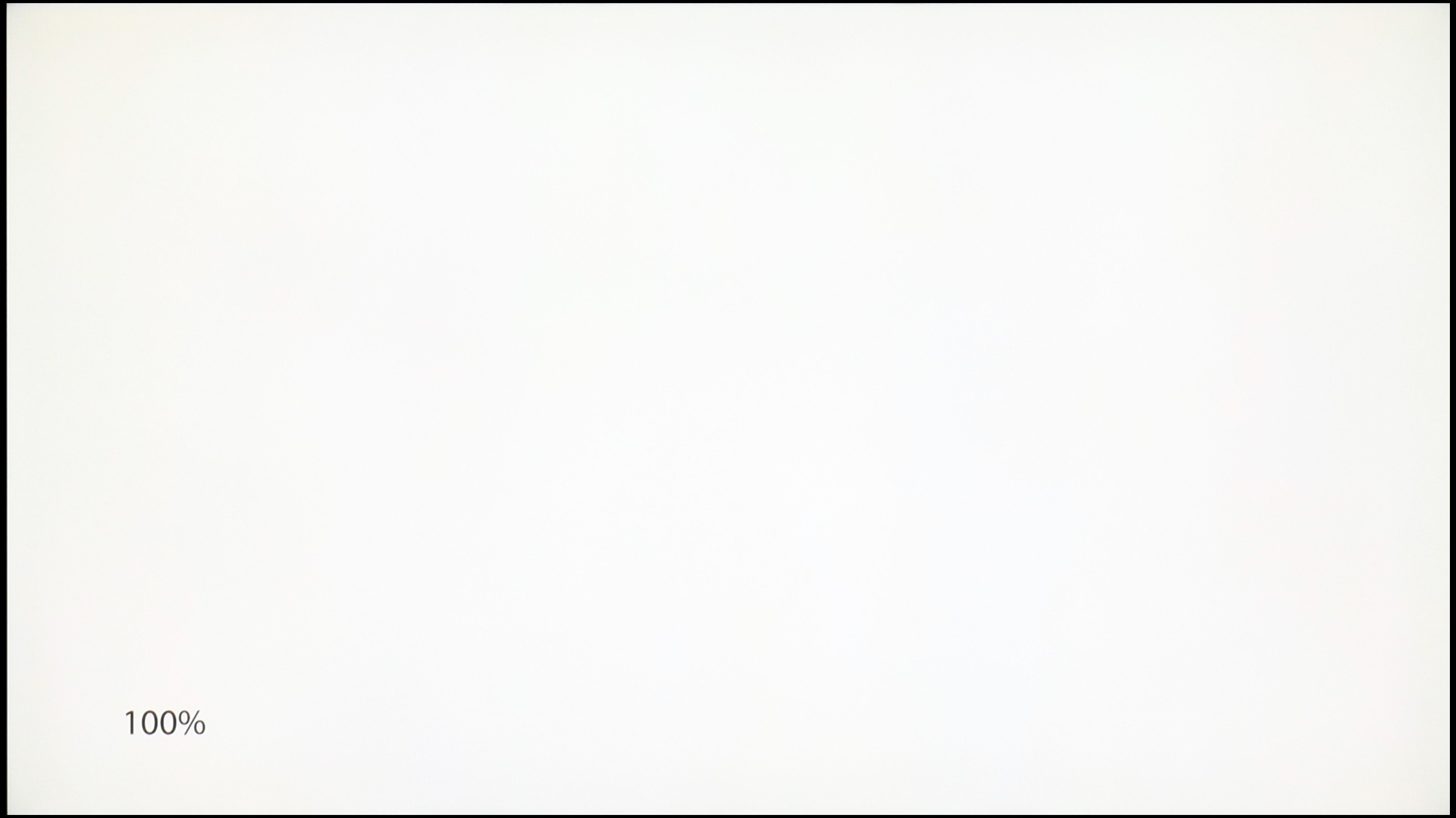
Samsung QD-OLED S90D / S94D
Hisense U7Q PRO
TV features
7.4/10
9.4/10
- HDMI inputs0 x HDMI 2.0, 4 x HDMI 2.1 48Gbps0 x HDMI 2.0, 4 x HDMI 2.1 48Gbps
- Other inputsRCA (Chinch)
- OutputsToslink (Optical audio), eARC (HDMI), ARC (HDMI)Toslink (Optical audio), eARC (HDMI), ARC (HDMI), Mini-Jack (Headphones)
- Network InterfacesWi-Fi 2.4GHz, Wi-Fi 5GHz, Ethernet (LAN) 100MbpsWi-Fi 2.4GHz, Wi-Fi 5GHz, Ethernet (LAN) 100Mbps
- TV receptionDVB-T, DVB-T2, DVB-S, DVB-S2, DVB-CDVB-T, DVB-T2, DVB-S, DVB-S2, DVB-C
Classic features:
- Recording to USB (terrestrial TV)
- Recording programming
- Picture in Picture (PiP)
- RF remote control (no need to aim at the screen)
- Backlit remote control
- Teletext
- Audio only mode
- Possibility to connect Bluetooth headphones to the TV
- Possibility to simultaneously use Bluetooth headphones and the TV speaker
Smart features:
- AirPlay
- Screen mirroring (Windows Miracast)
- Wyszukiwanie głosowe
- Voice search in native language
- Ability to connect a keyboard and mouse


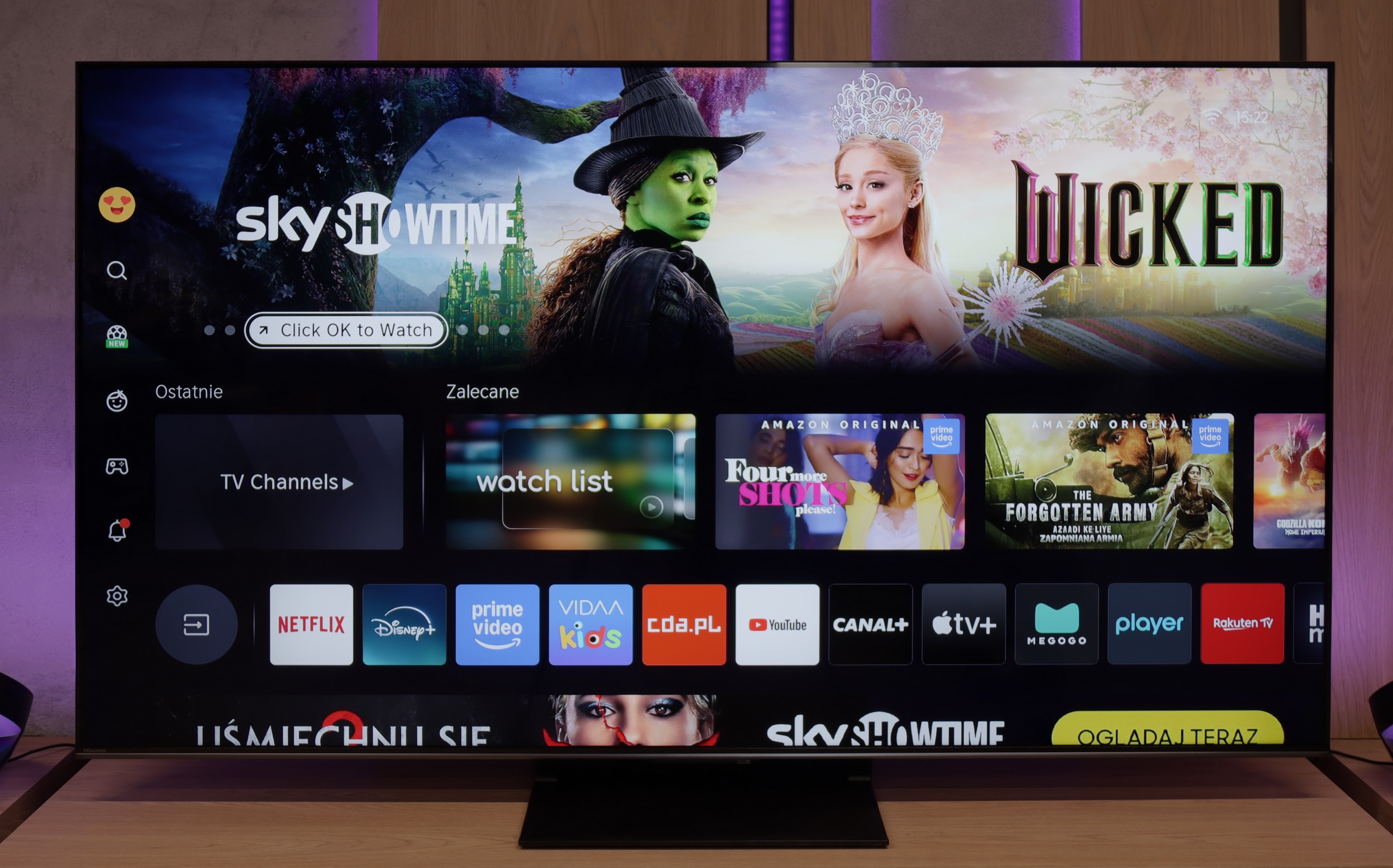
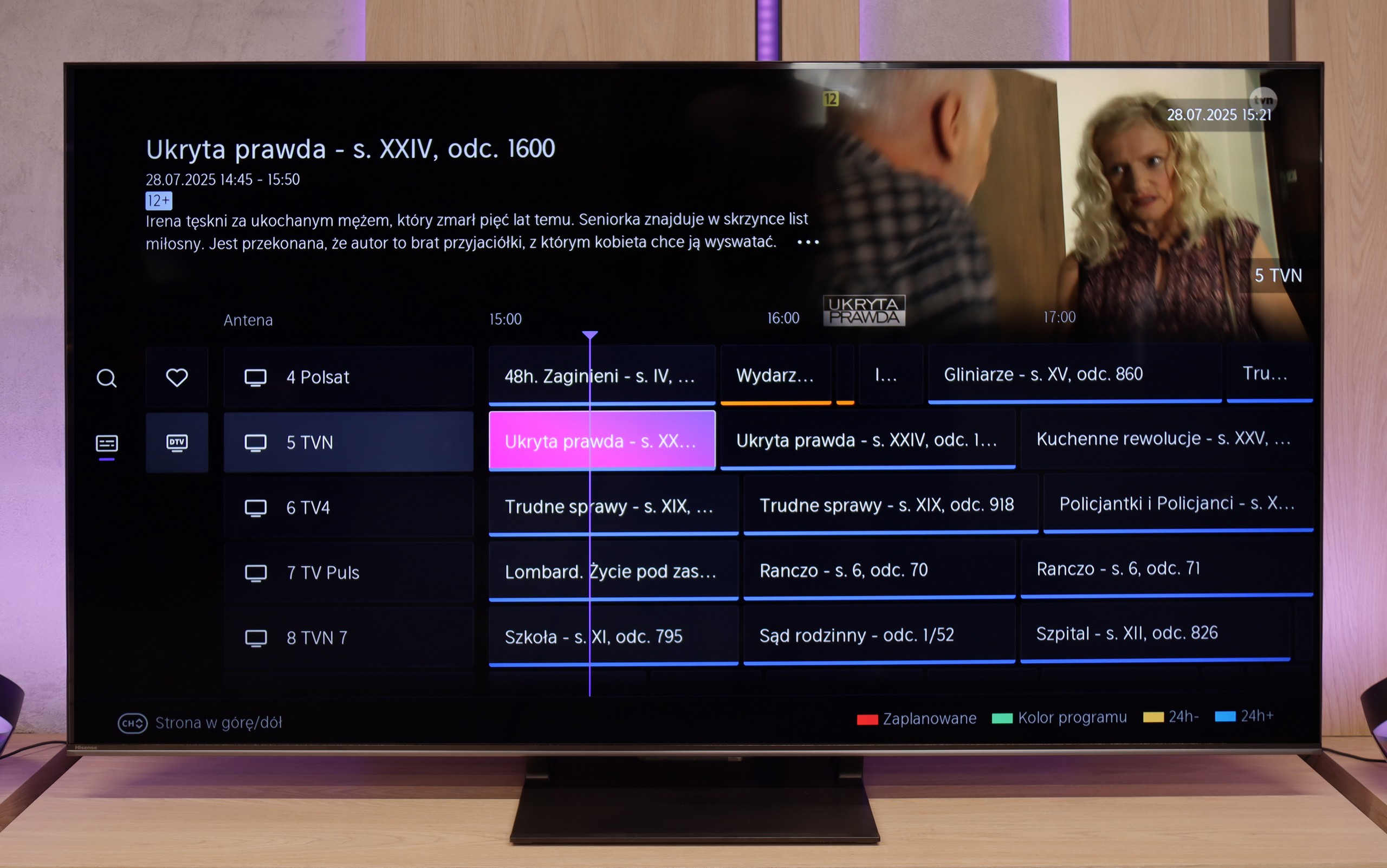
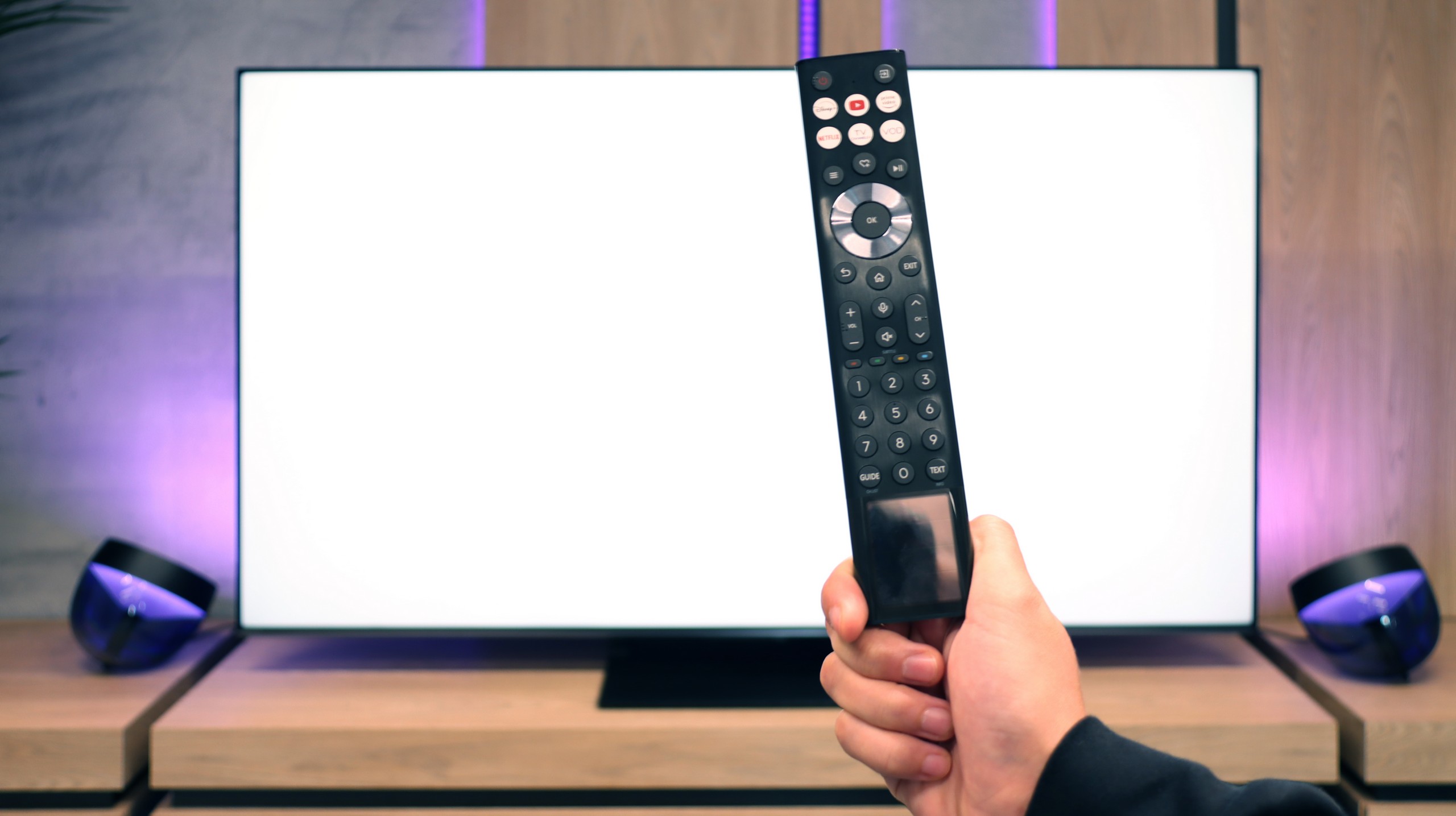
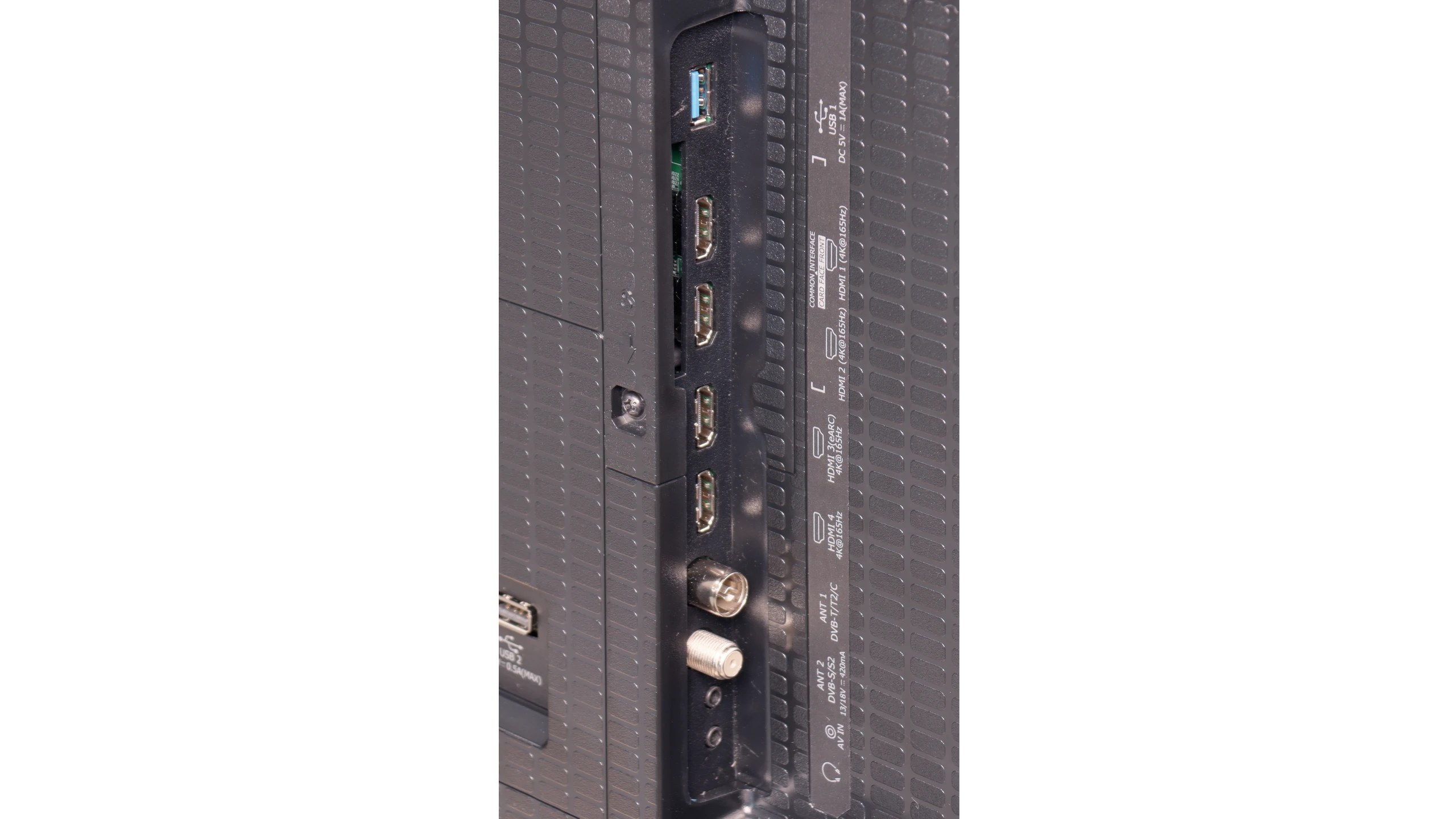
The Samsung S90D television offers a range of features that significantly enhance user comfort, making it an ideal device for entertainment in the comfort of your home. The Tizen system, on which this model is based, is a modern and advanced platform that provides users with an intuitive and seamless experience. Thanks to the user-friendly interface, navigating through applications and settings is quick and intuitive, making it easy to use the television even for those less familiar with technology. Tizen supports a rich set of applications, including all popular streaming services such as Netflix, YouTube, and Amazon Prime Video. A new feature for 2024 is the availability of voice search in Polish. It is also worth noting the eco-friendly solar remote, which is not only environmentally friendly but also practical for everyday use. With it, you can control multiple devices connected to the television, eliminating the need for multiple remotes. Additionally, the television supports AirPlay, enabling easy content sharing from Apple devices such as iPhone or iPad. The S90D also allows for the connection of various Bluetooth devices like mice, keyboards, or headphones, which increases its versatility and allows for user experience personalisation. Furthermore, the SmartThings app significantly enhances the capabilities of the television, allowing integration with other smart home devices. This enables remote management of lighting, security, and other aspects of the home ecosystem. Users can also take advantage of the Philips Hue app, which allows for lighting synchronisation with the image displayed on the screen, creating even more immersive visual experiences. The only downside that can be pointed out is the lack of USB recording support. For some users, this may be a limitation. Despite this, the S90D television offers many advanced features and technologies that make it an excellent choice for anyone seeking high-quality entertainment in their home and wanting to integrate their devices into one convenient system.
Classic features of U7Q PRO
If you plan to use the television in a more "classic" way, that is, for watching daily programs or connecting headphones, the Hisense U7Q PRO has almost everything you could expect. The television easily supports recording to USB, you can connect headphones via Bluetooth, and the remote control is backlit, which is still not standard even in more expensive models. While many people today are foregoing these classic features in favour of streaming apps, it's good to know that the U7Q PRO still does this well and without compromises (aside from the lack of PiP functionality).
SmartTV System: Vidaa
When it comes to smart features, in Europe this model runs on the VIDAA system. The system operates smoothly, has a built-in web browser, supports voice control (also in Polish), and includes AirPlay, which will please users of Apple devices. However, it should be noted that VIDAA is a closed system, so you won't find all the popular apps that we've become accustomed to with Android TV or Google TV. Before purchasing, it's worth checking whether the apps you actually use are available.
Playing files from USB
9.1/10
8.2/10
Supported photo formats:
Maximum photo resolution:

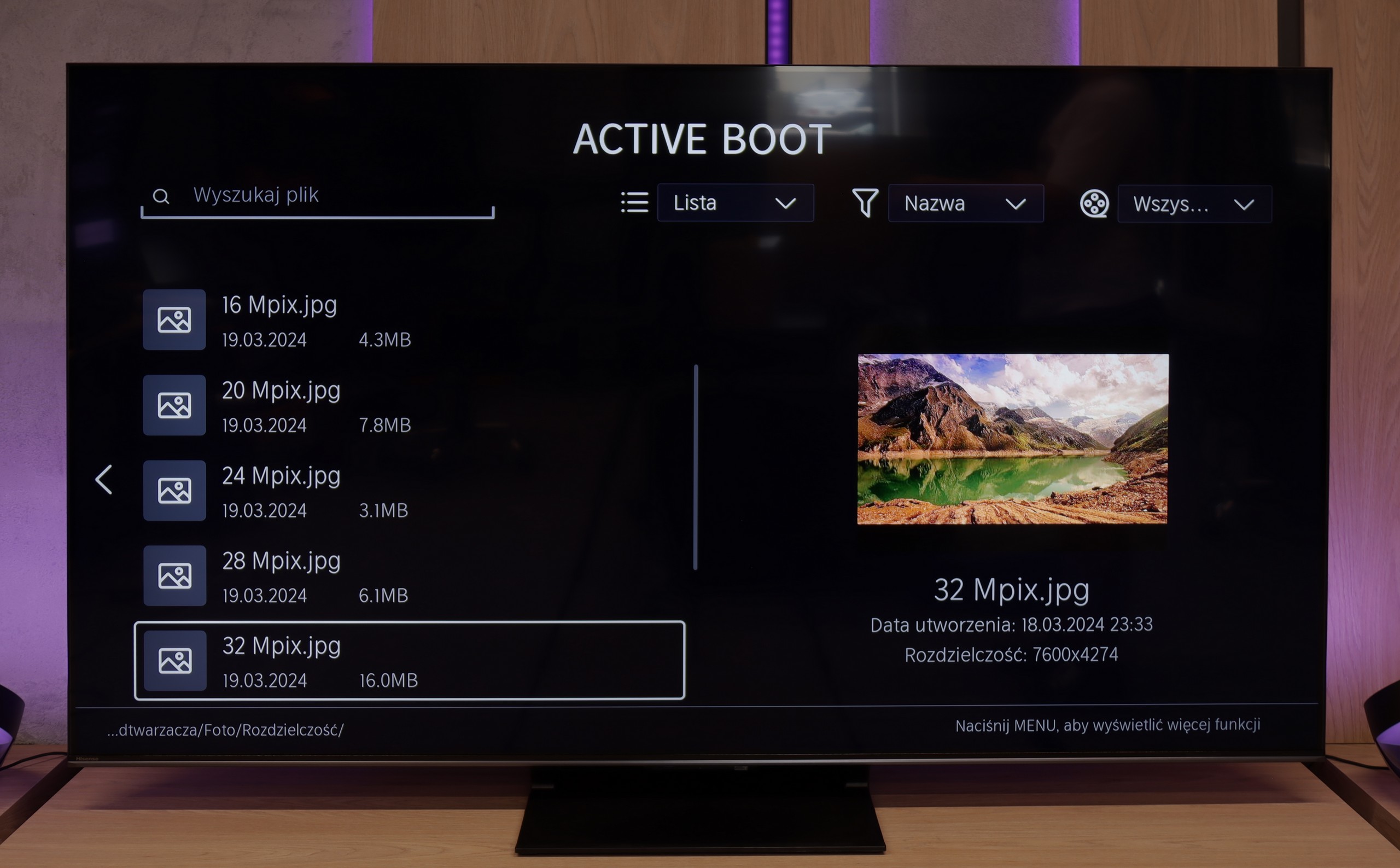
Samsung S90D is fitted with a built-in player that supports most popular video formats, allowing for convenient playback of films from various sources. The player also supports subtitles in Polish and allows users to customise the font colour, enhancing comfort when watching content with subtitles. In terms of photo formats, the television handles many, but one of the few downsides is the inability to play the popular PNG format. Nevertheless, the overall playback capabilities of the S90D are at an excellent level.
The built-in media player in the VIDAA system worked very efficiently and seamlessly on our U7Q PRO unit. The television had no trouble reading external video and audio files, as well as subtitles, making it convenient to watch movies from a USB drive or external hard drive. Most popular formats worked flawlessly, so there was no need to convert anything. The only complaint is a certain selectiveness in handling high-resolution images – not all of them opened. Therefore, you will find a detailed list of supported image resolutions (Mpix) in our comparison table.
Apps
8.7/10
7.7/10














































Sound
7.4/10
7.8/10
- Maximum volume-85dB
- Dolby Digital Plus 7.1
- Dolby True HD 7.1
- Dolby Atmos in Dolby Digital Plus (JOC)
- Dolby Atmos in Dolby True HD
- DTS:X in DTS-HD MA
- DTS-HD Master Audio
The Samsung S90D TV is equipped with a 2.1 audio system boasting a total power of 40 W, delivering clear and dynamic sound. With a subwoofer located at the bottom of the casing, the bass is deep and palpable, while the mid and high tones remain well-balanced. It's worth noting that the twin model S94D offers an even more advanced 2.1.2 speaker setup with a power of 60 W. If the silver colour of the S94D casing is not a drawback, and the price difference between these models is minimal, it’s worth considering the version with the “4” at the end. Despite lacking support for the DTS format, the S90D TV utilises other advanced sound technologies such as Dolby Atmos and Dolby Digital Plus, providing spacious and immersive sound. It is also worth mentioning the presence of the proprietary Q-Symphony feature, which allows synchronisation of the TV's speakers with the manufacturer's soundbar.
For built-in TV speakers, the U7Q PRO sounds surprisingly good. The audio is clear, with distinct mid and high tones, and while the bass is somewhat limited, it doesn’t completely disappear. One could say that for "TV speakers," the level is more than satisfactory. However, it’s worth noting that in our test unit, we couldn't play DTS:X audio from local files – the TV simply doesn’t support it. This means that if you’re counting on a cinematic surround effect solely from its built-in speakers, there might be a bit of a letdown. Thankfully, the TV seamlessly transmits DTS signals to an external amplifier, so if you have a home theatre – just connect it up and everything works as it should.
Acoustic Measurements
No acoustic data
85dBC (Max)
75dBC


